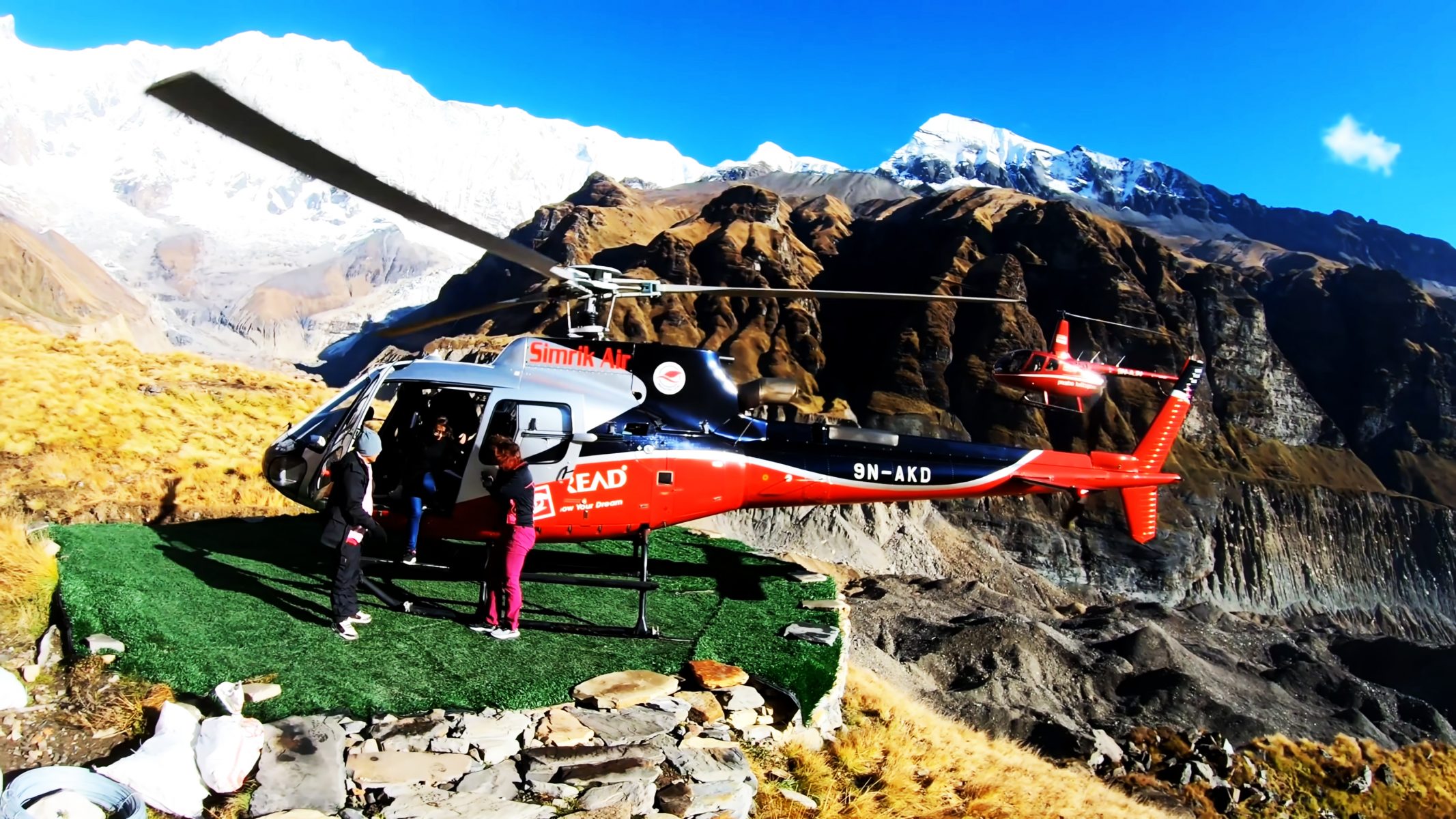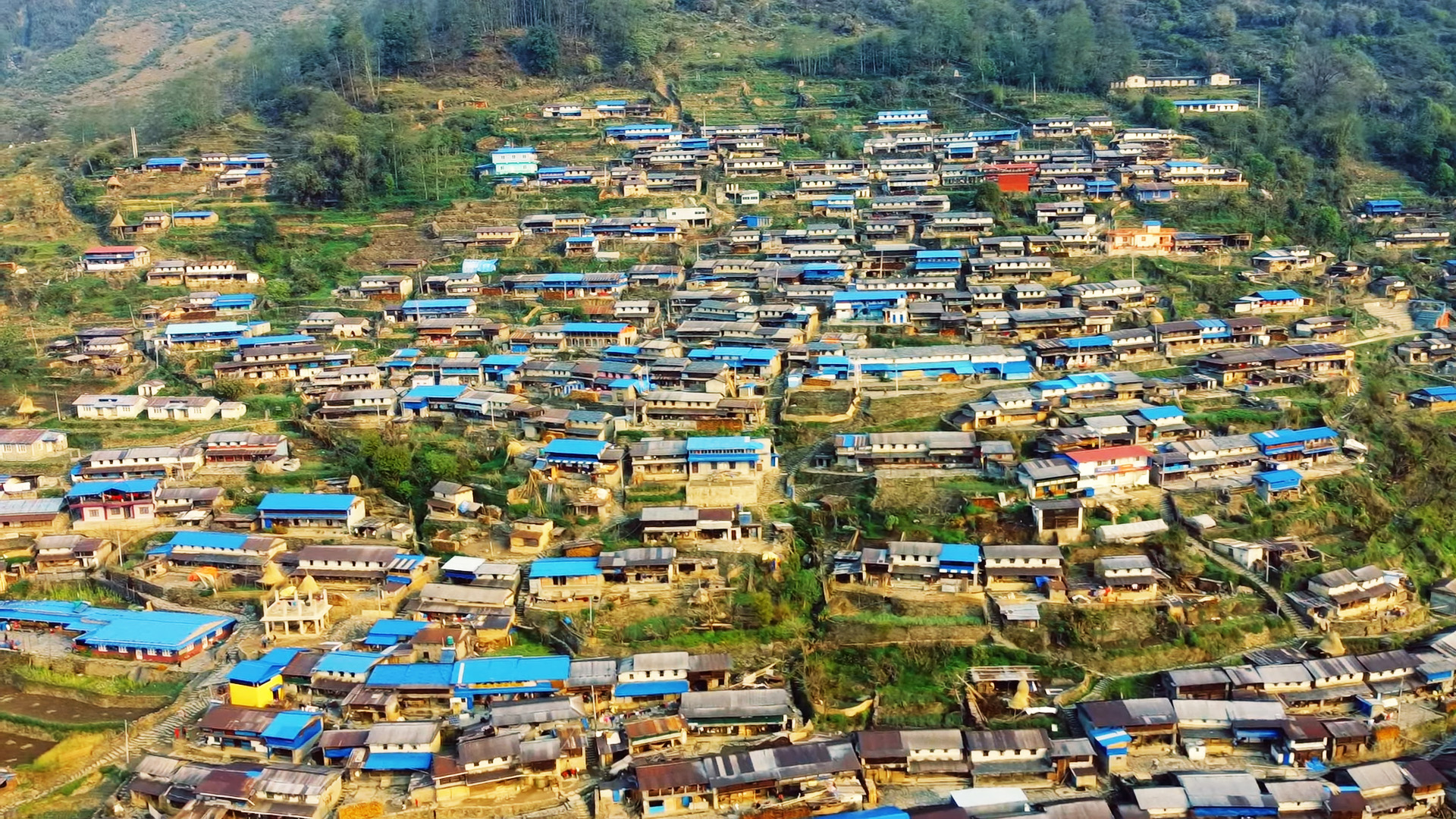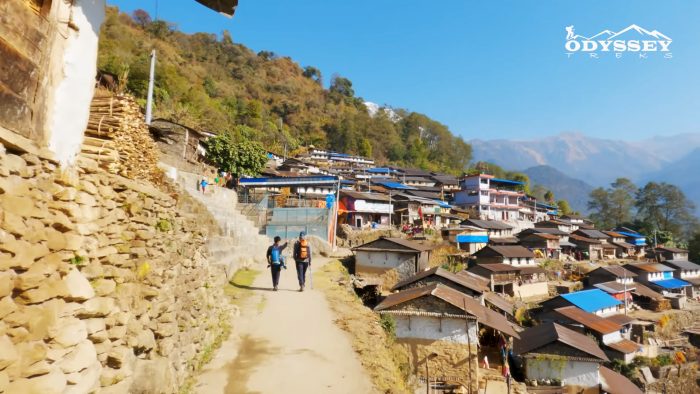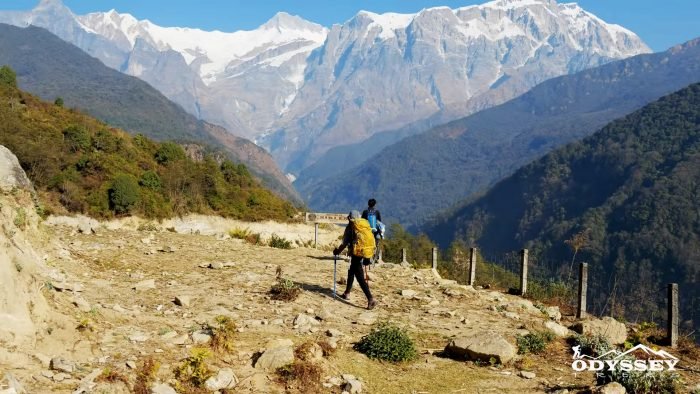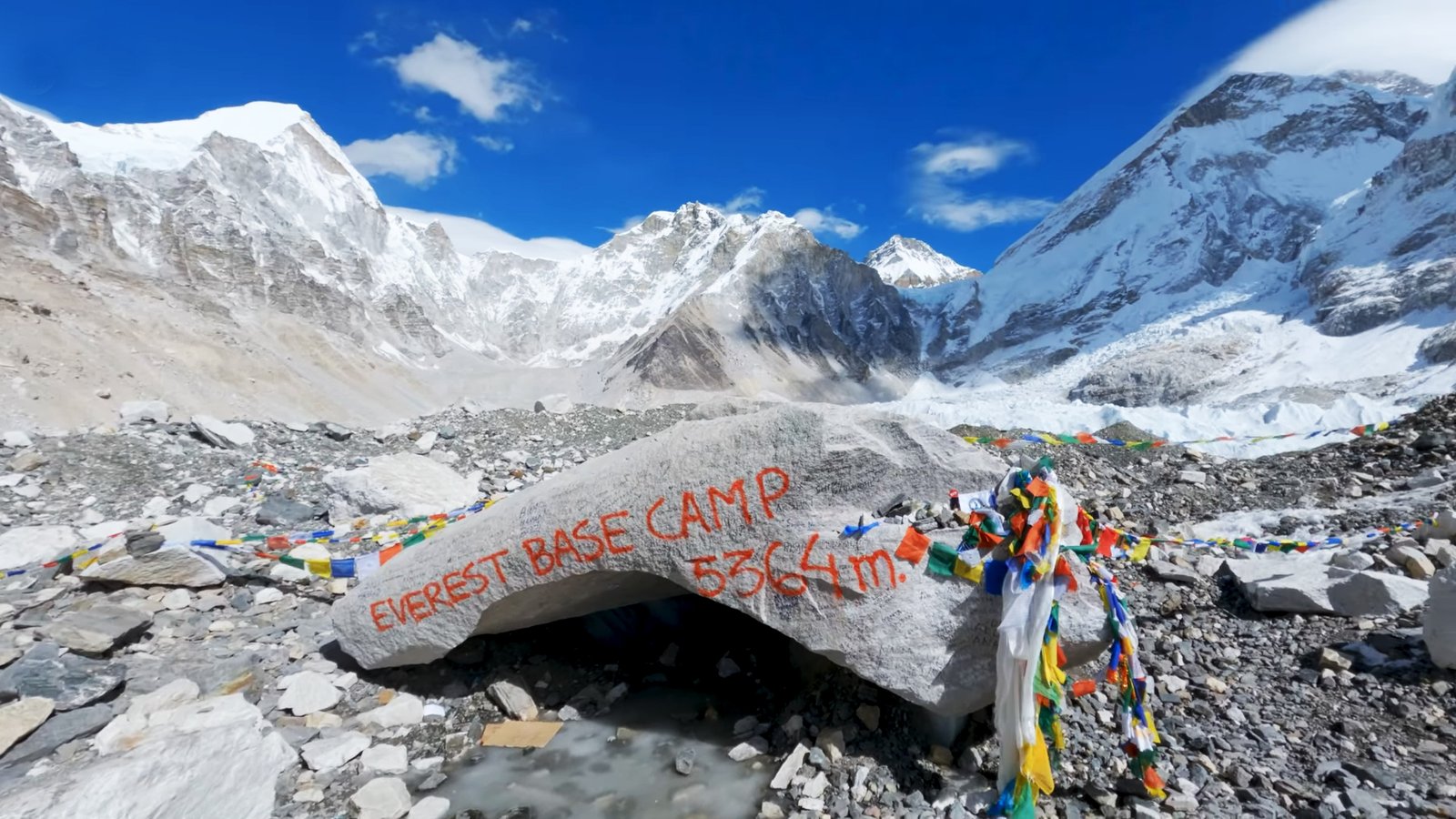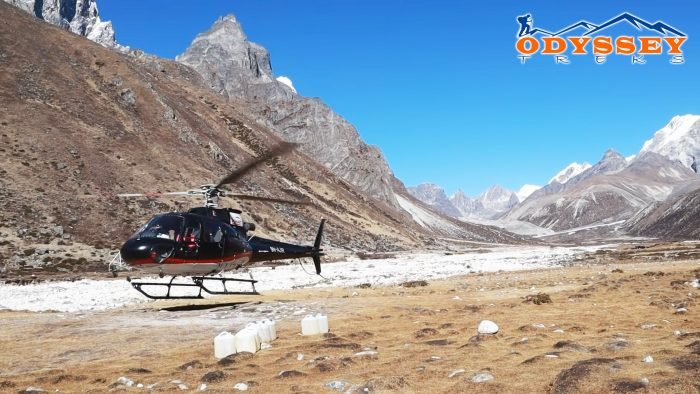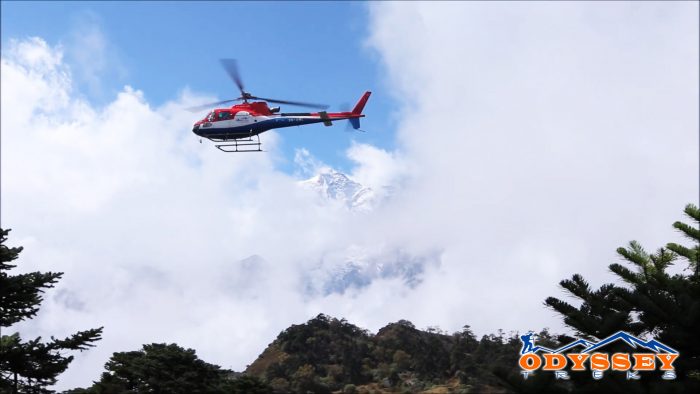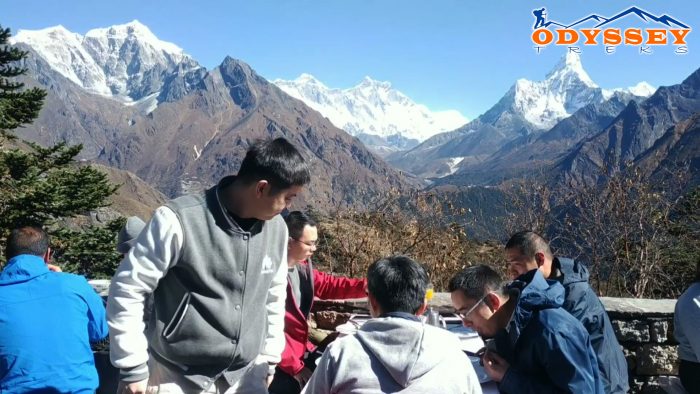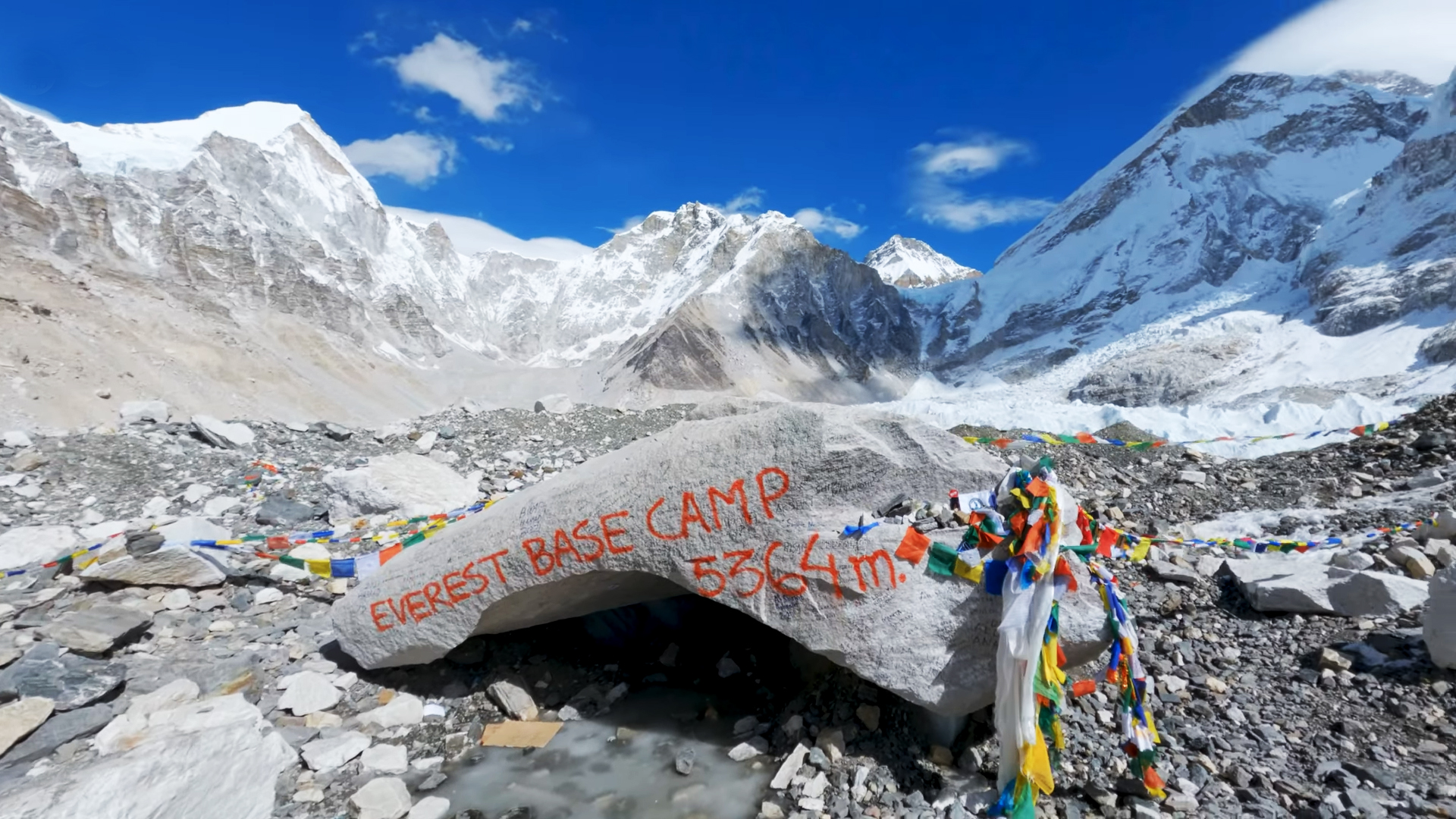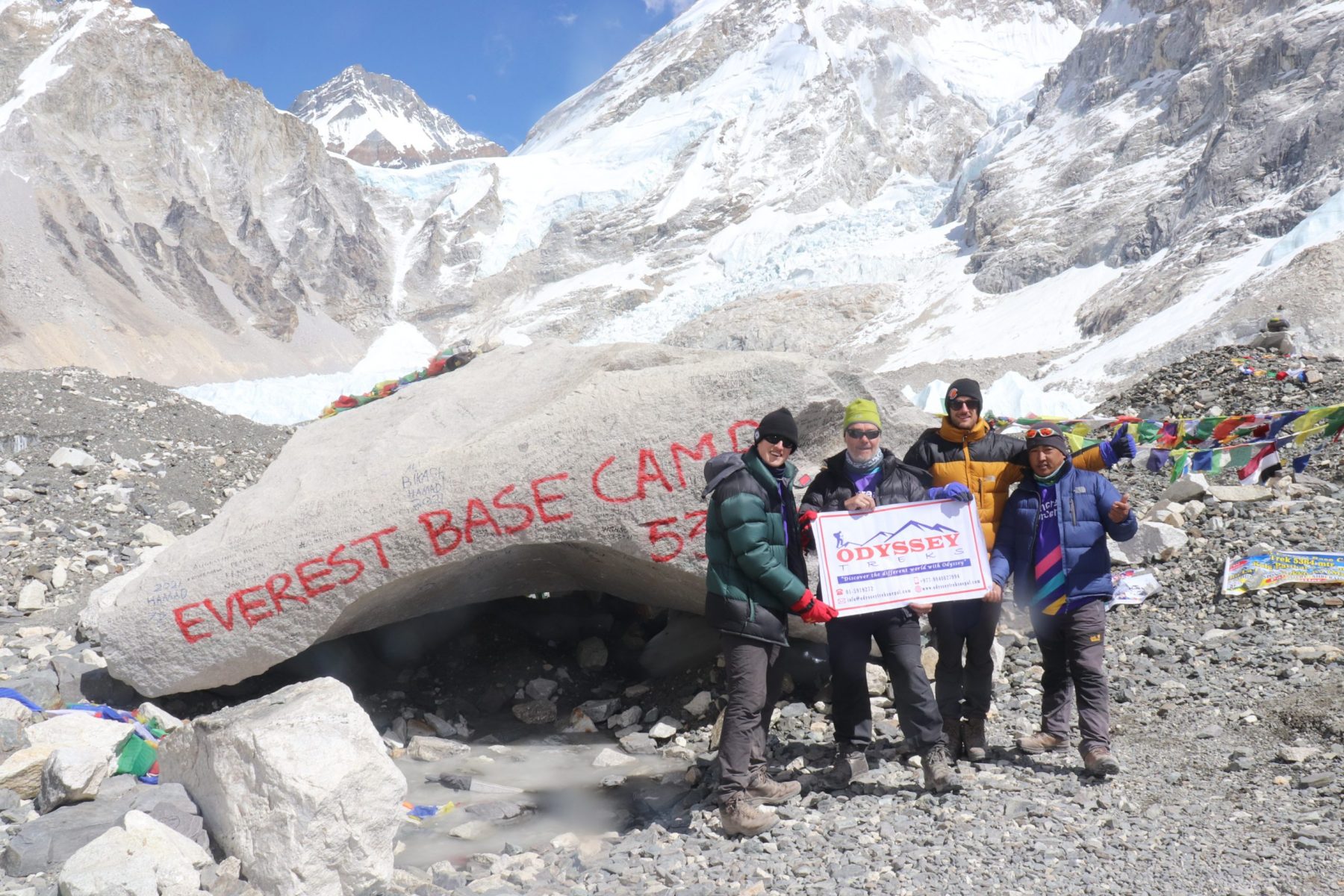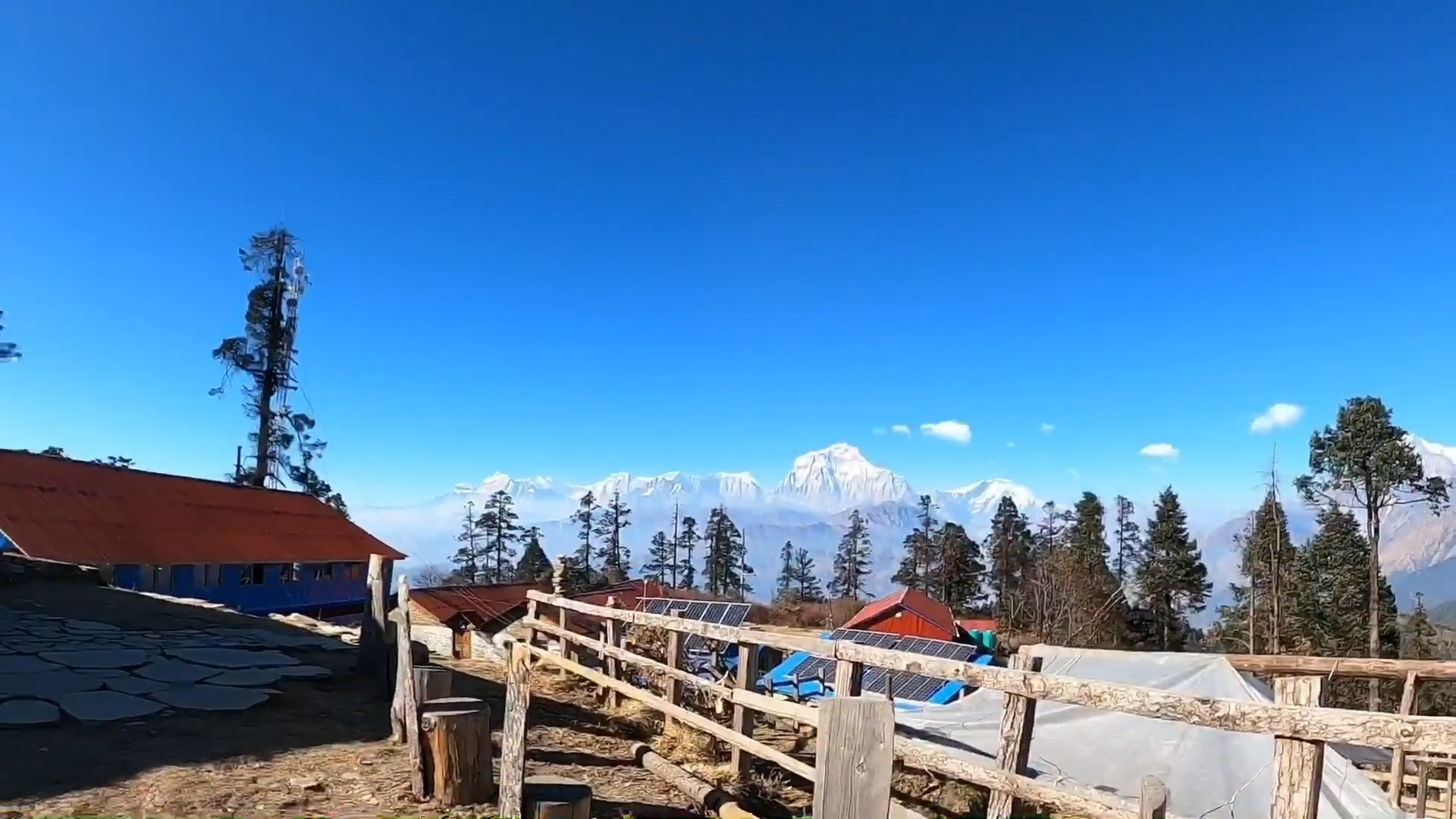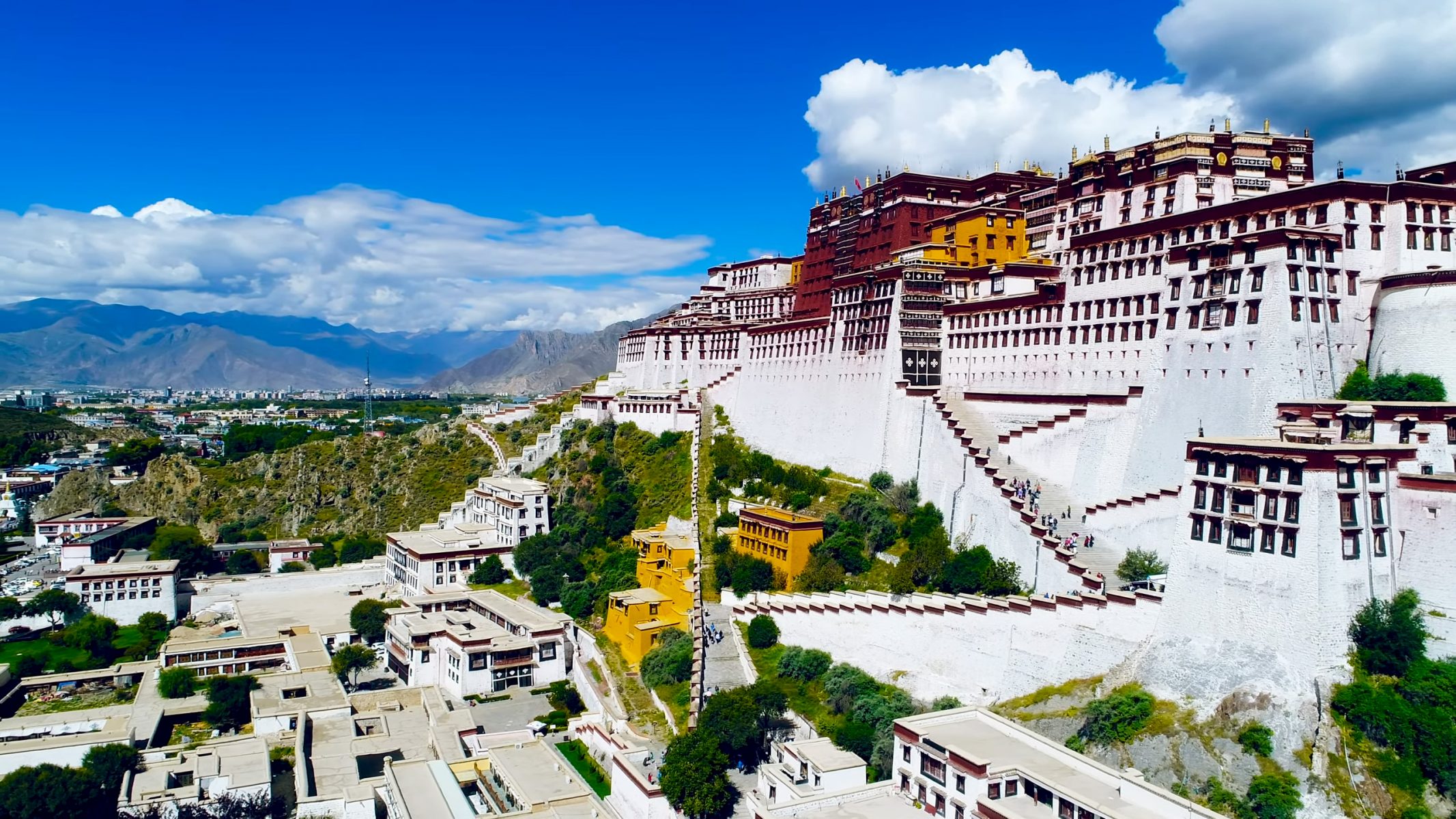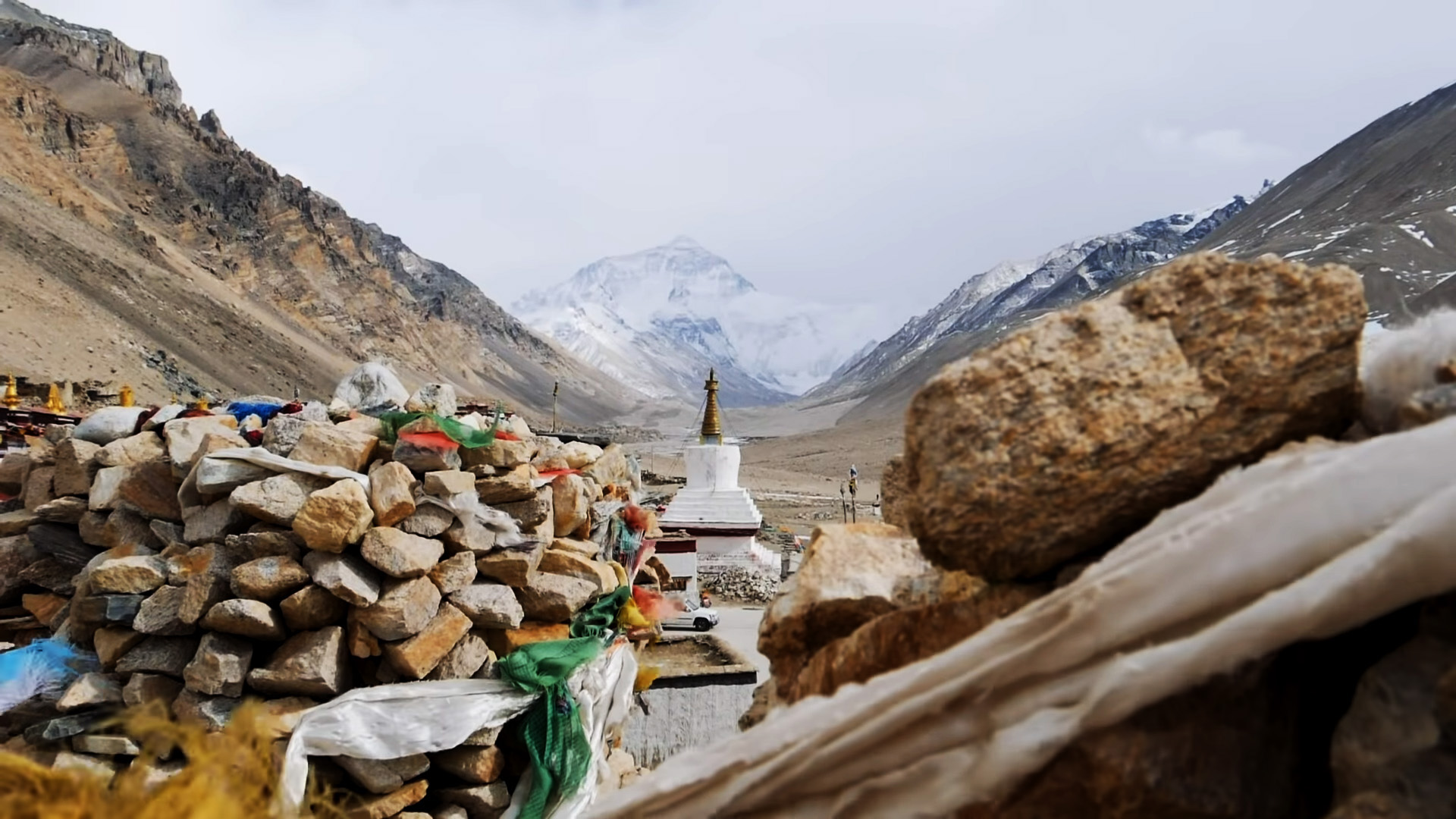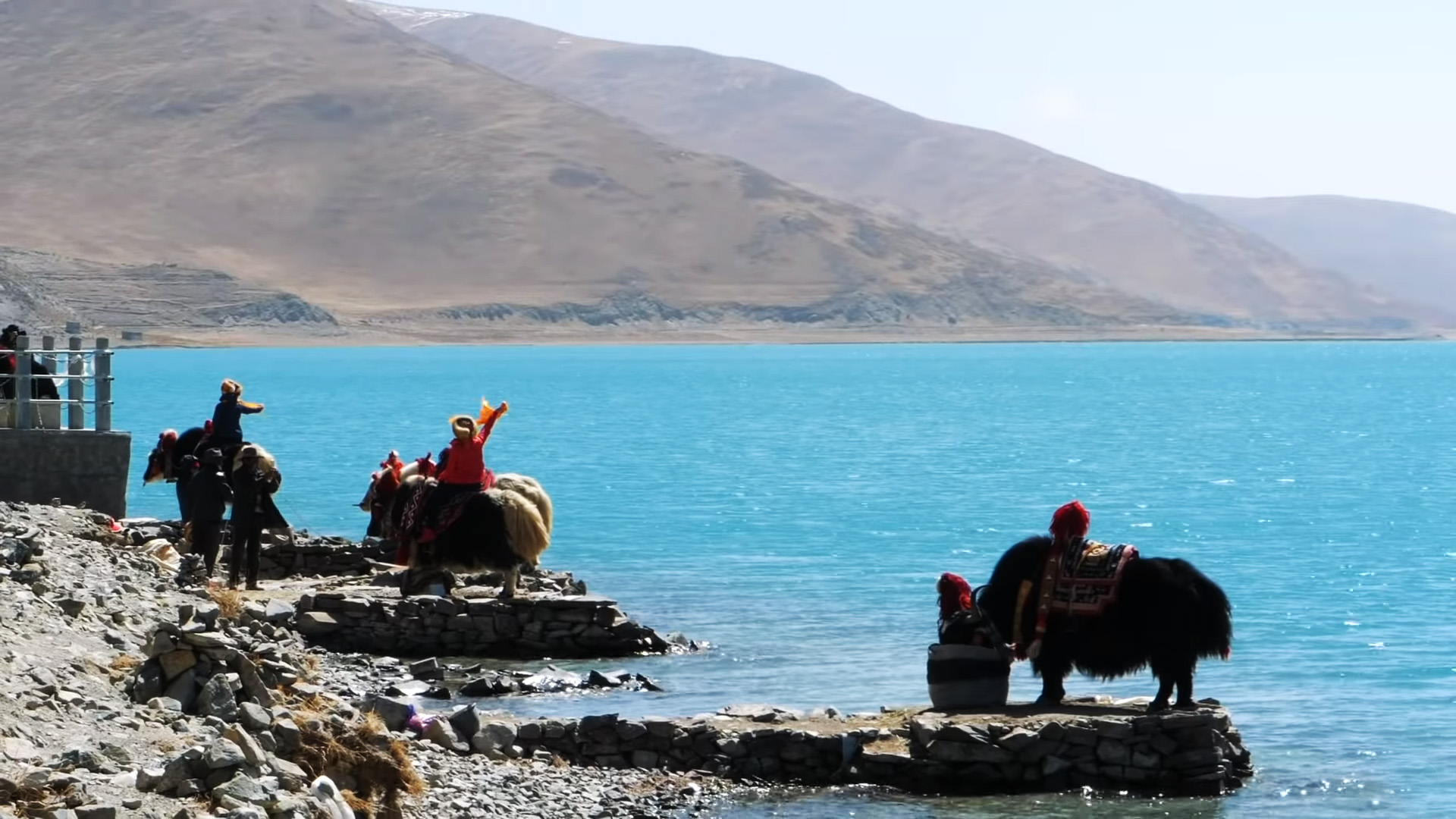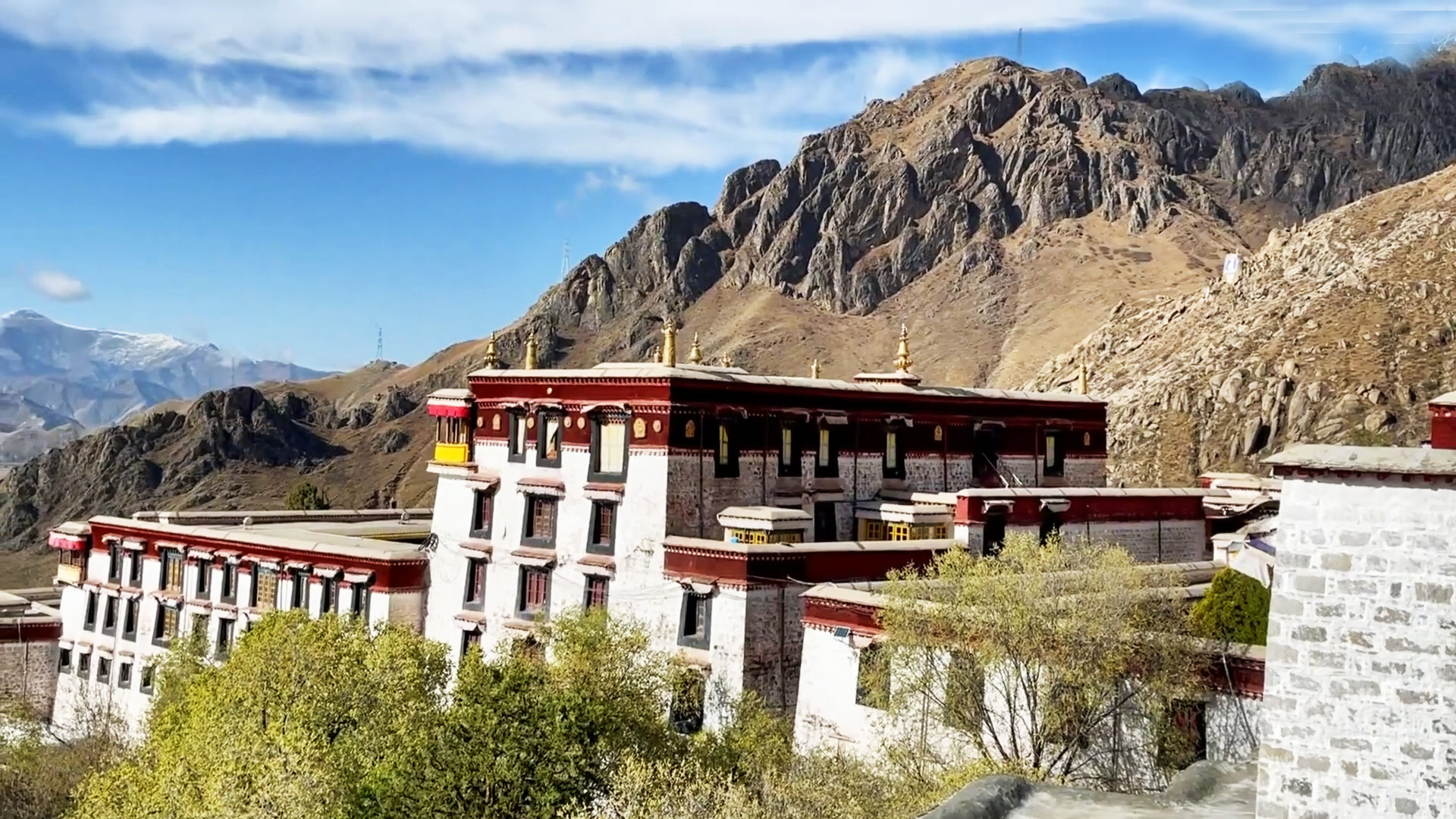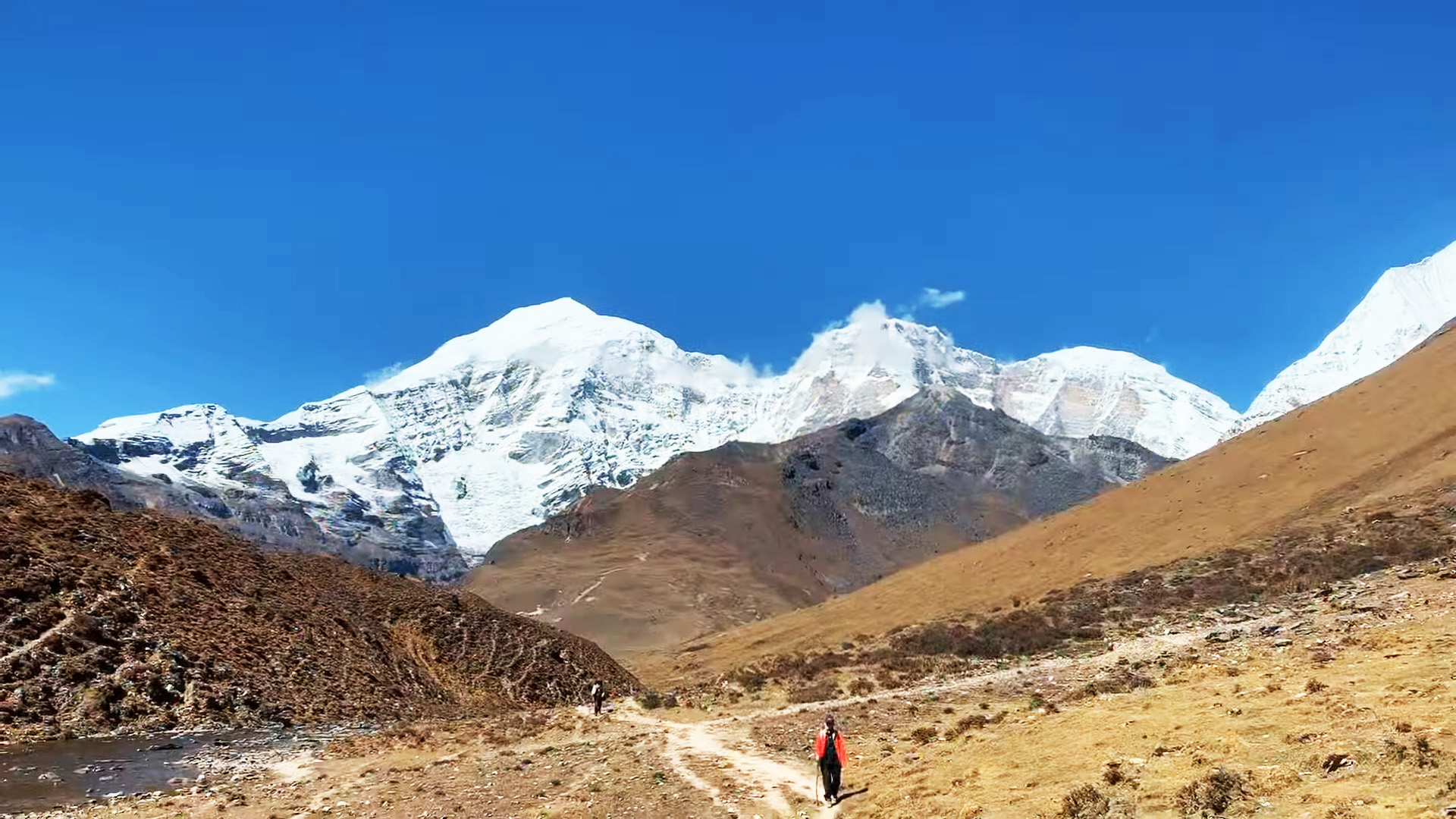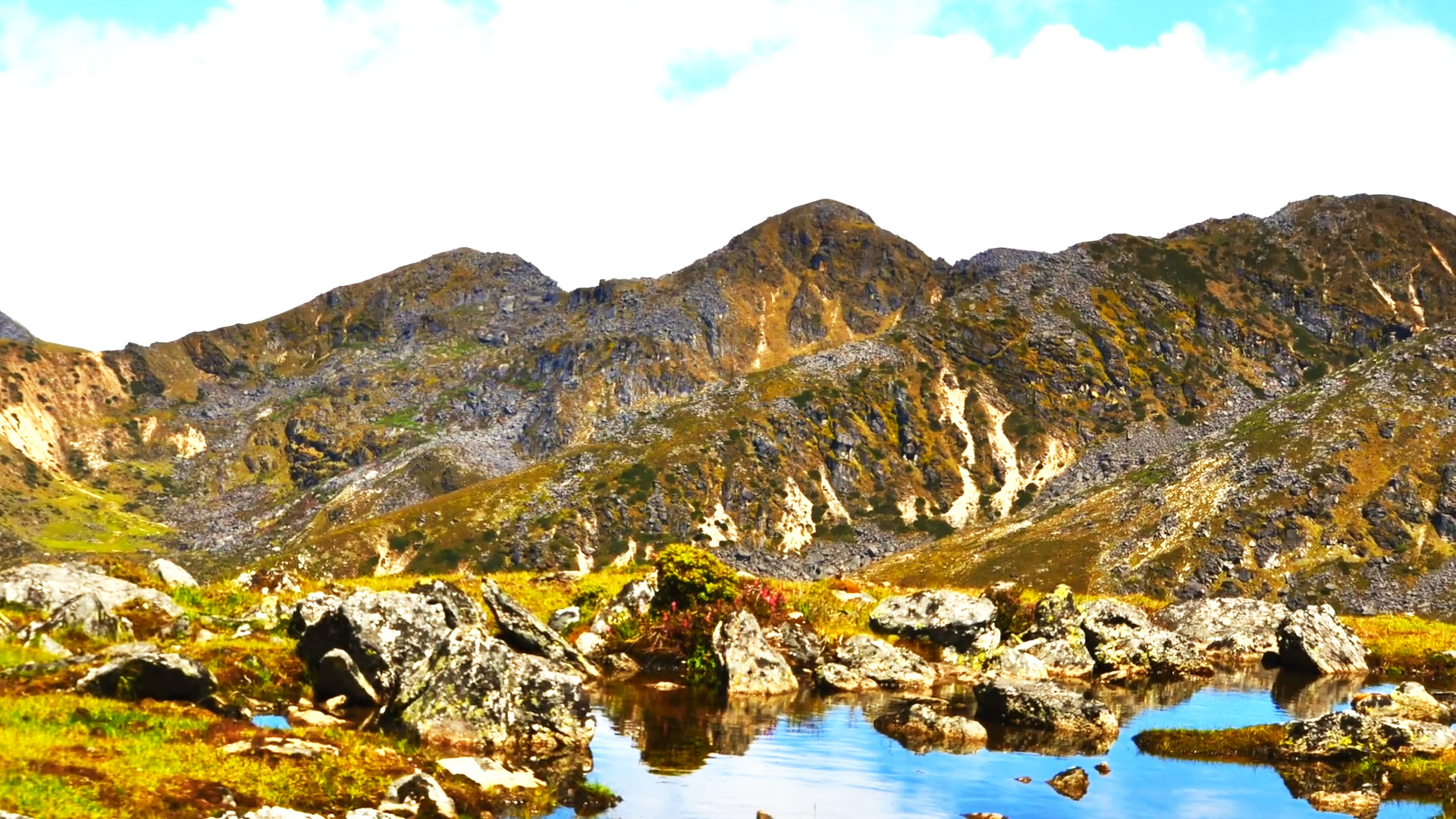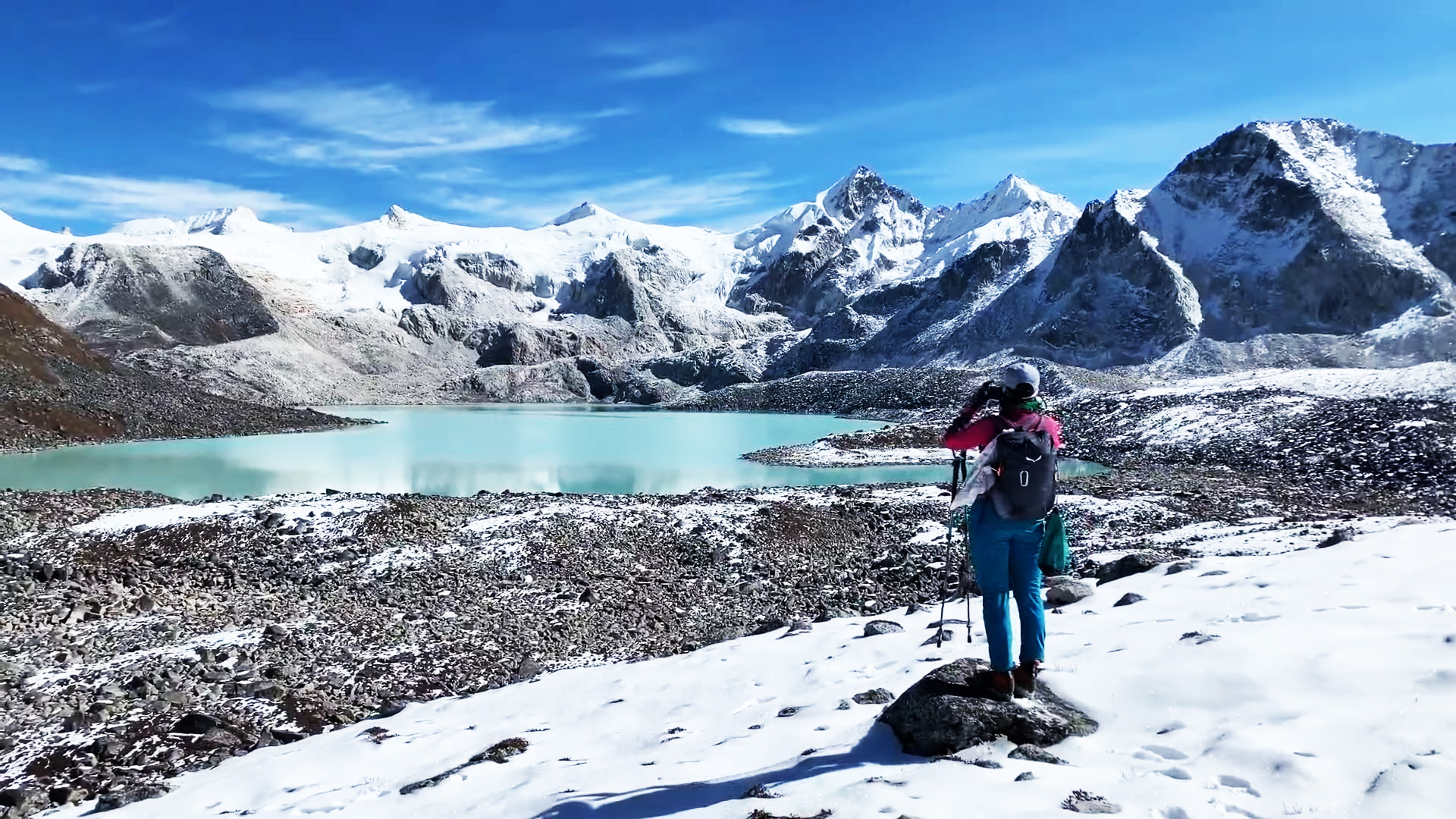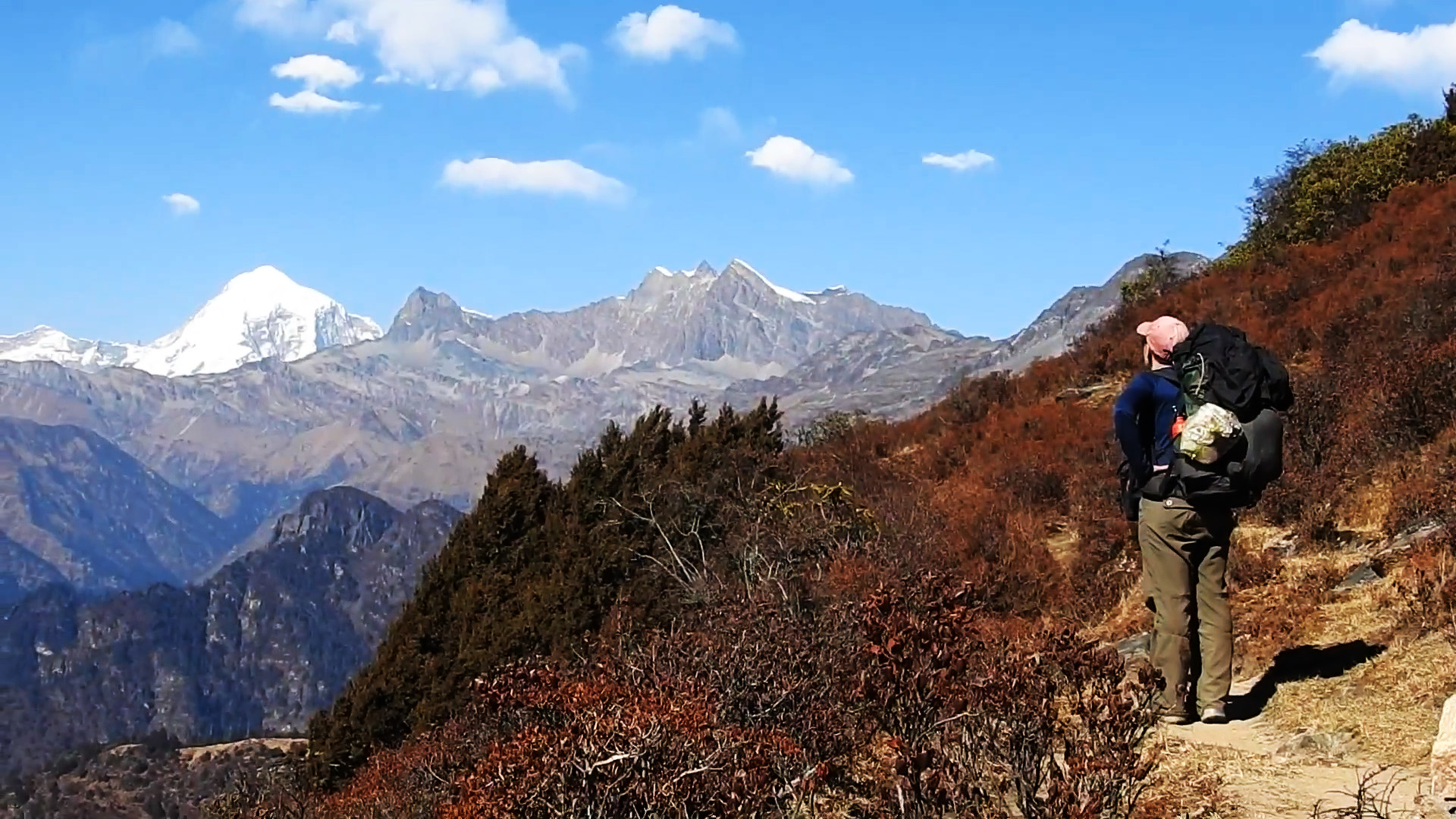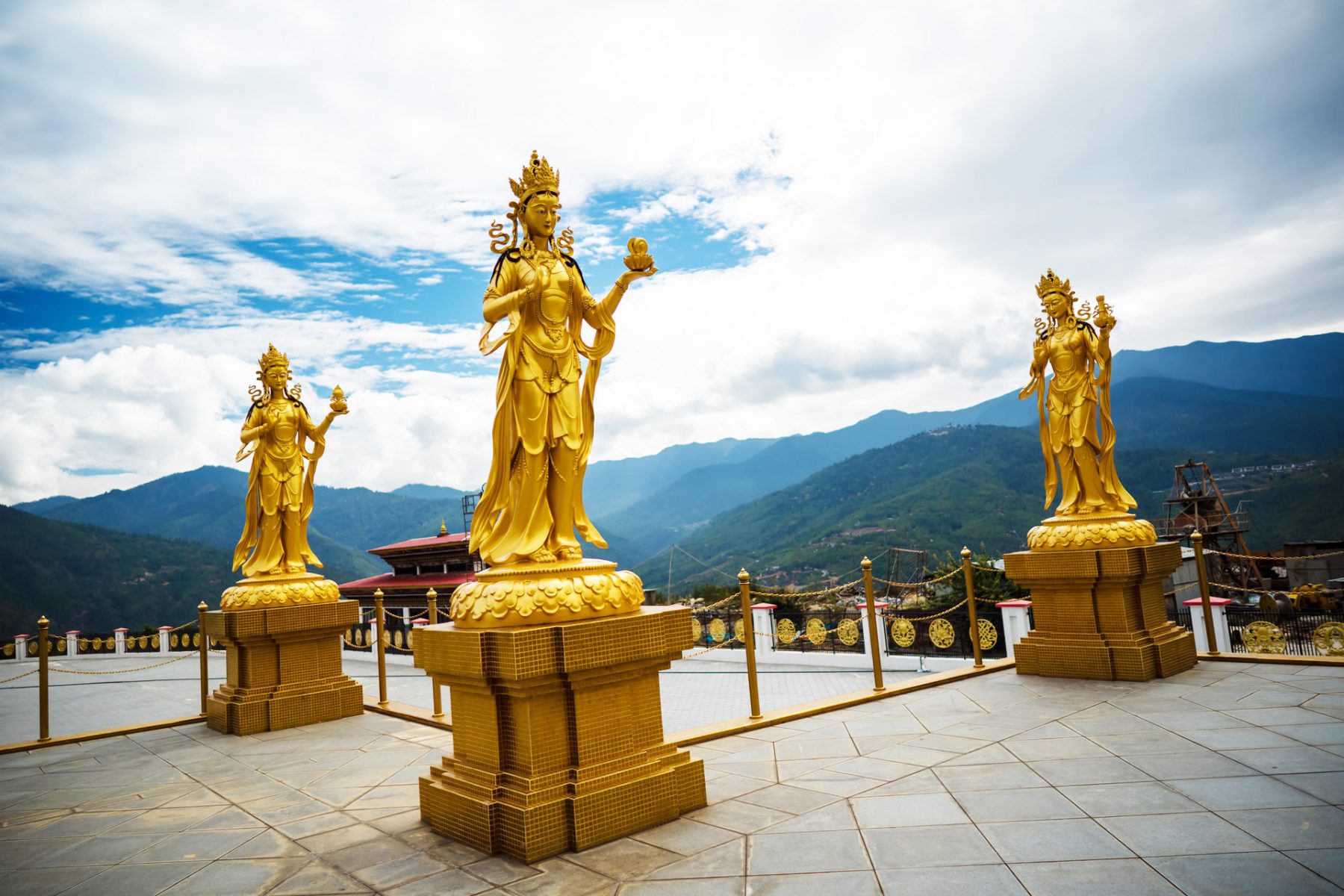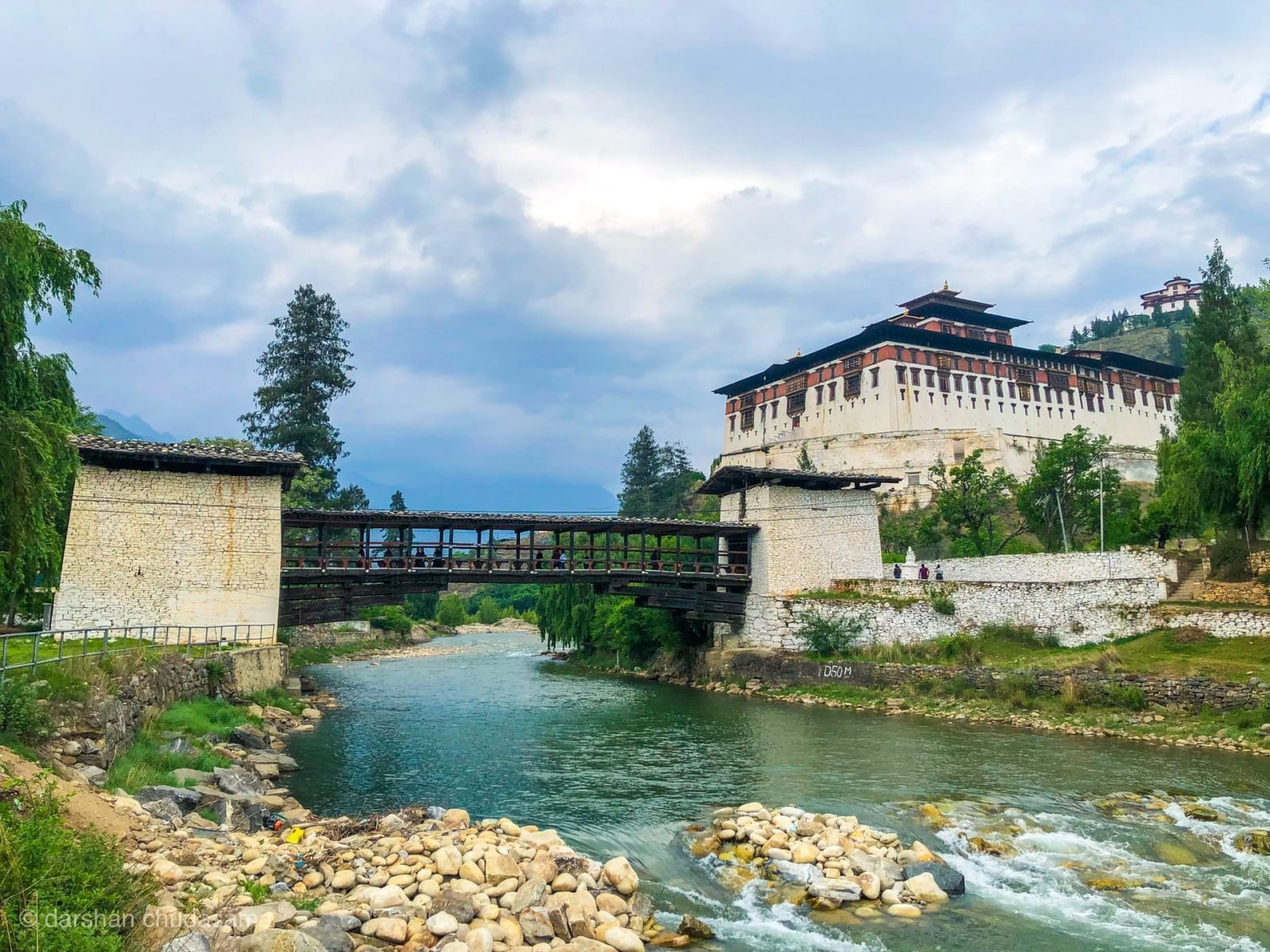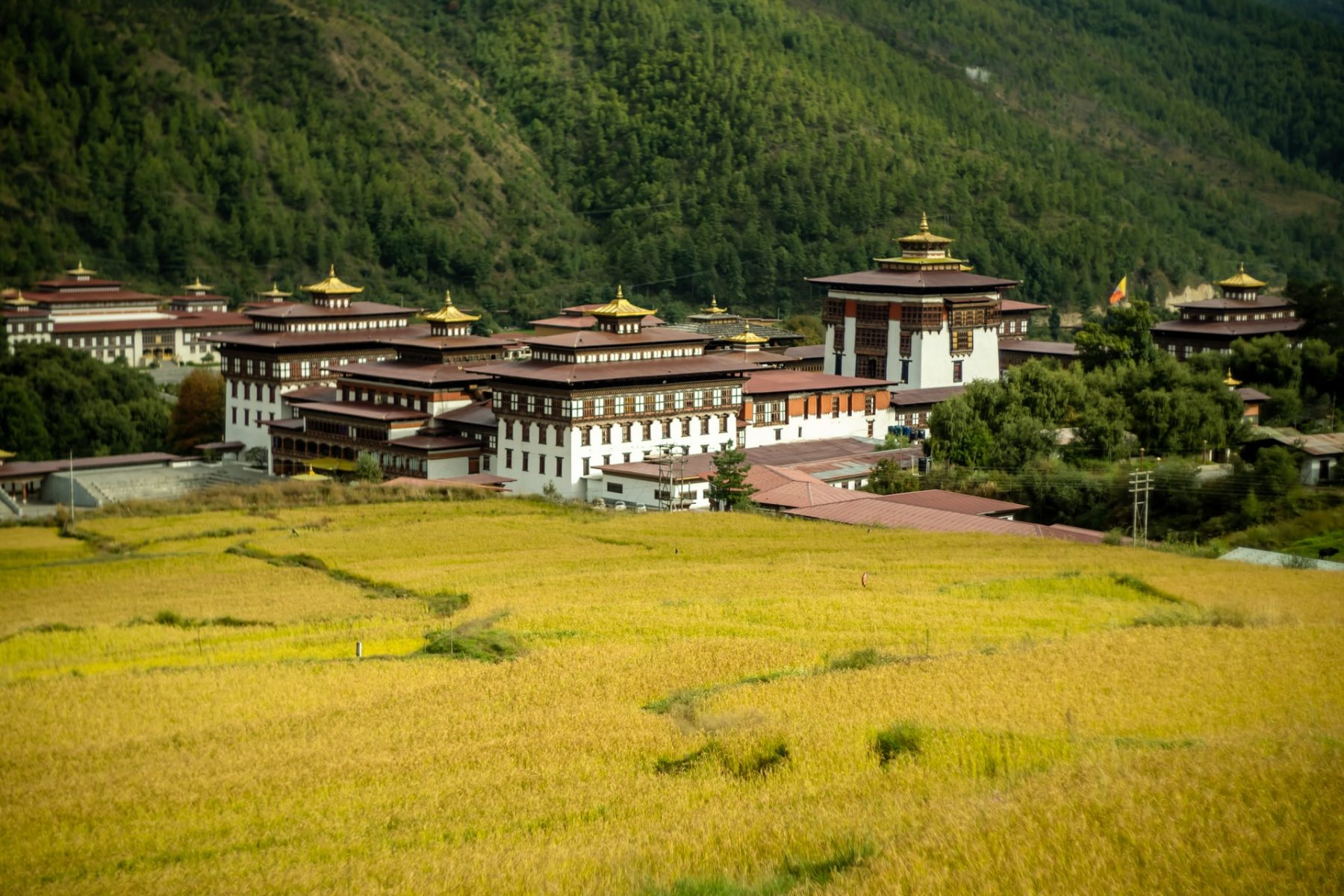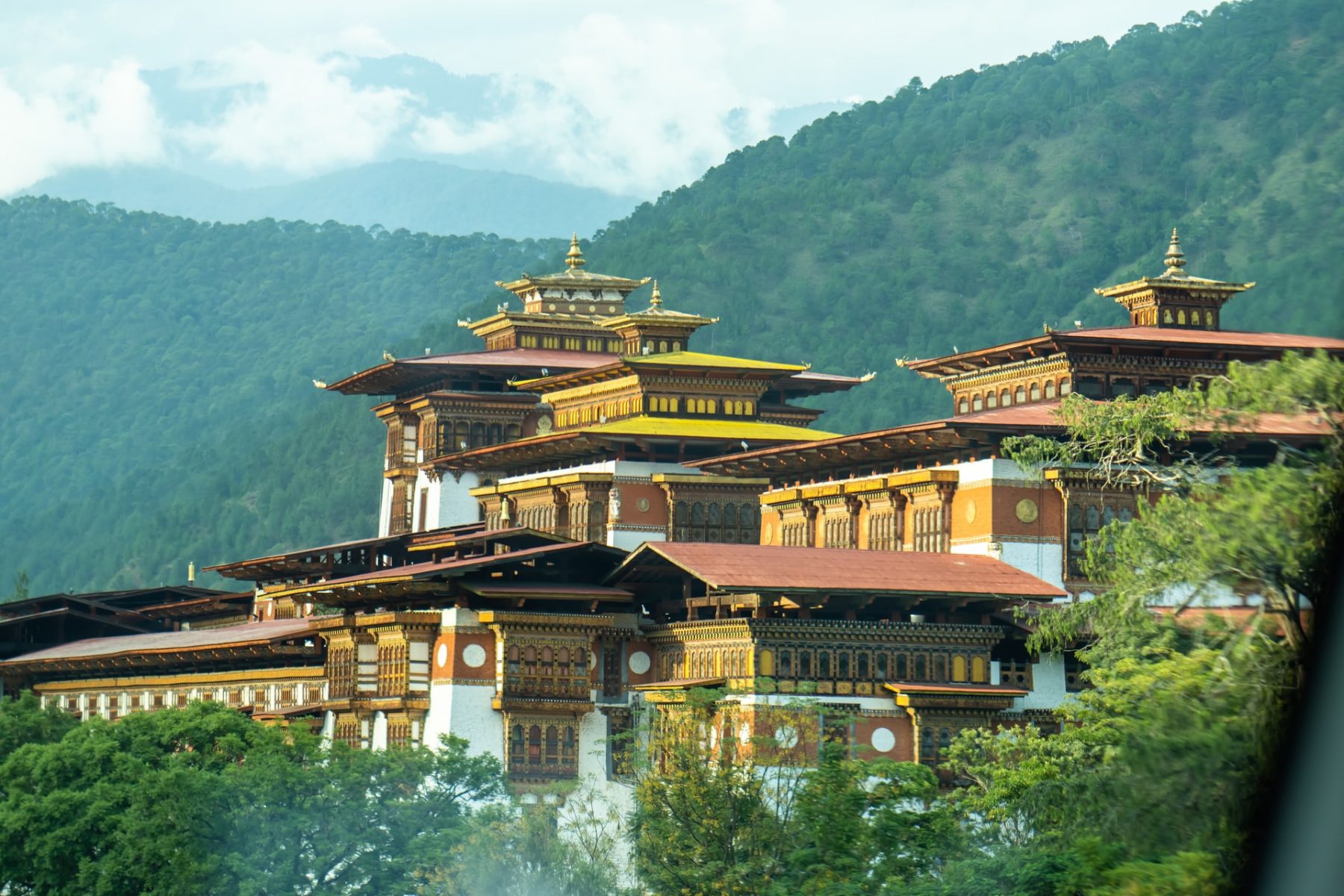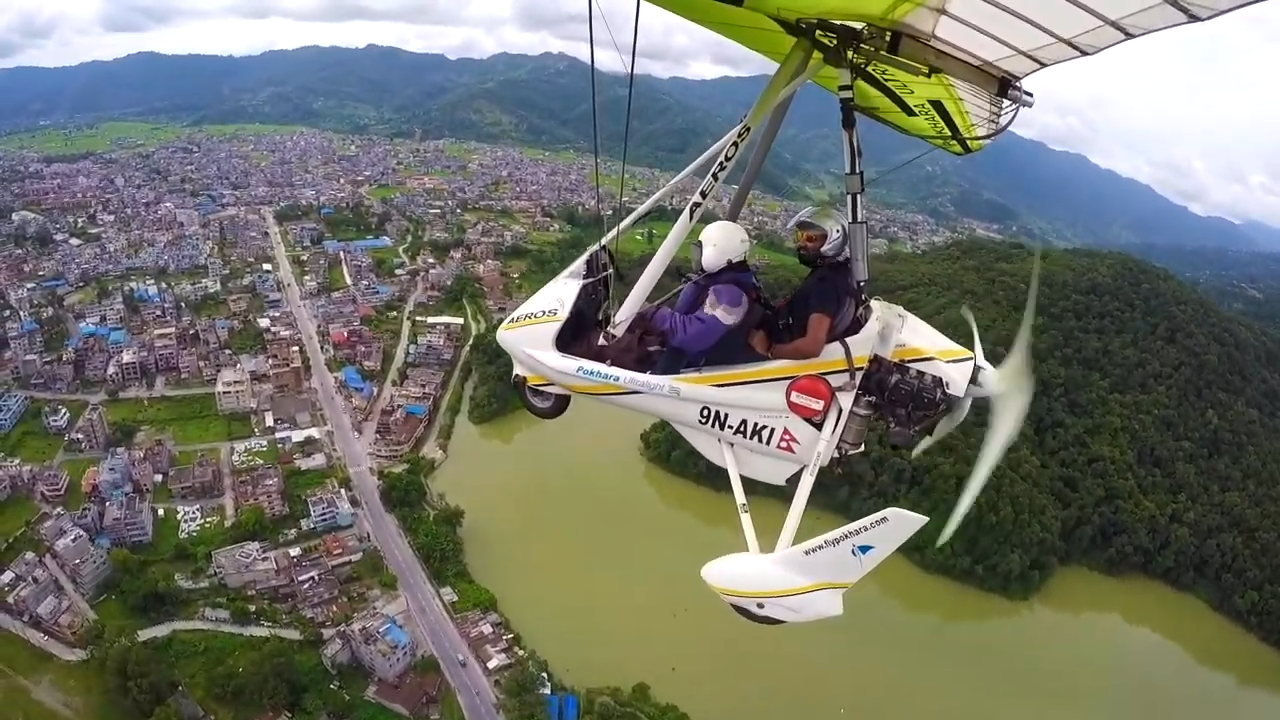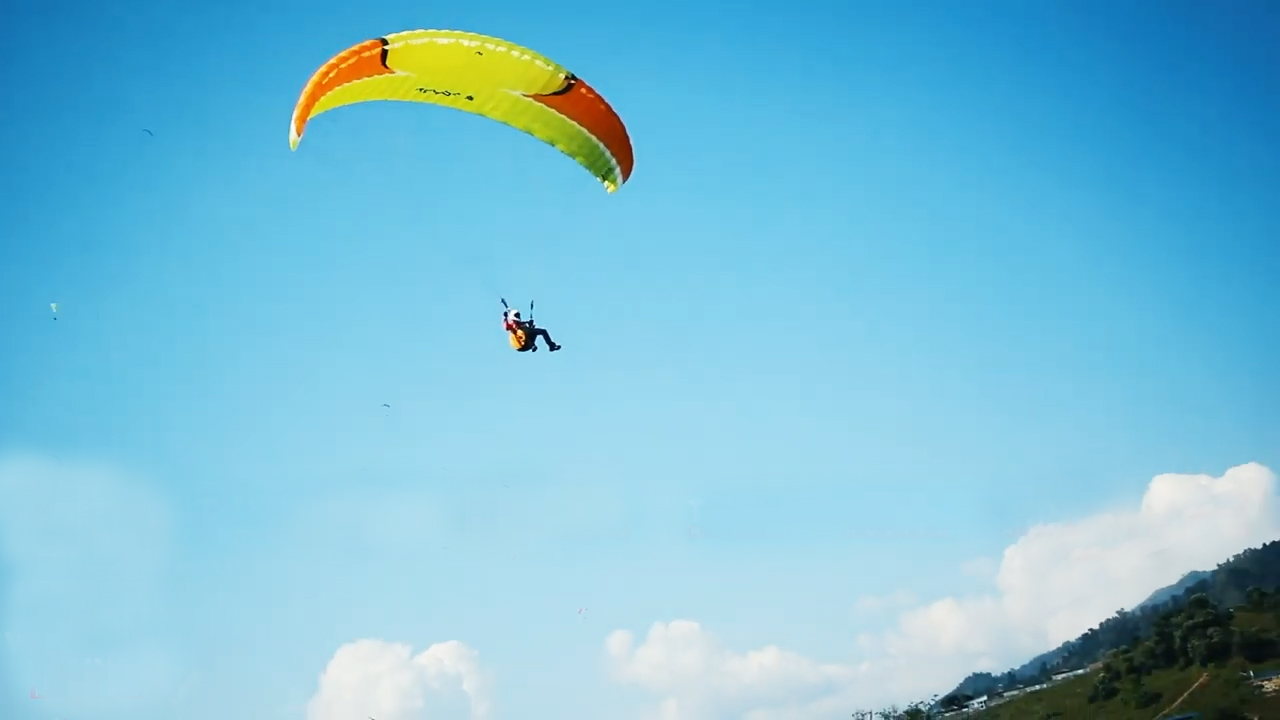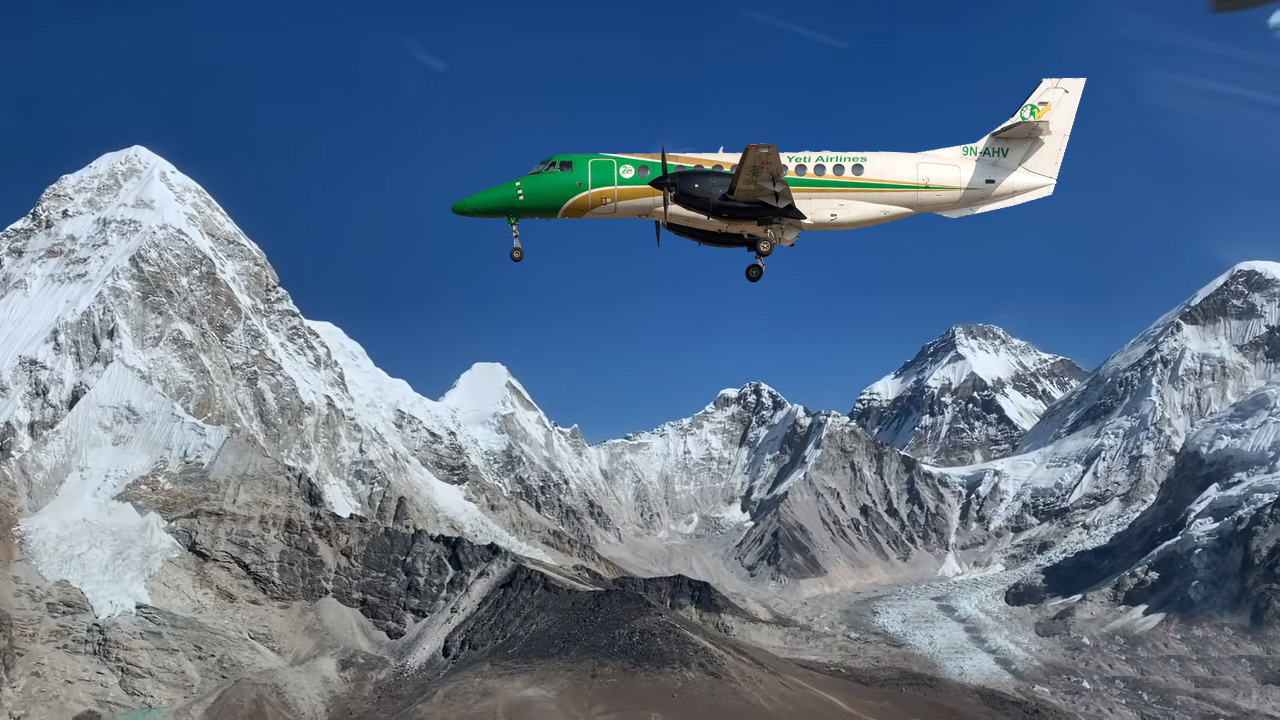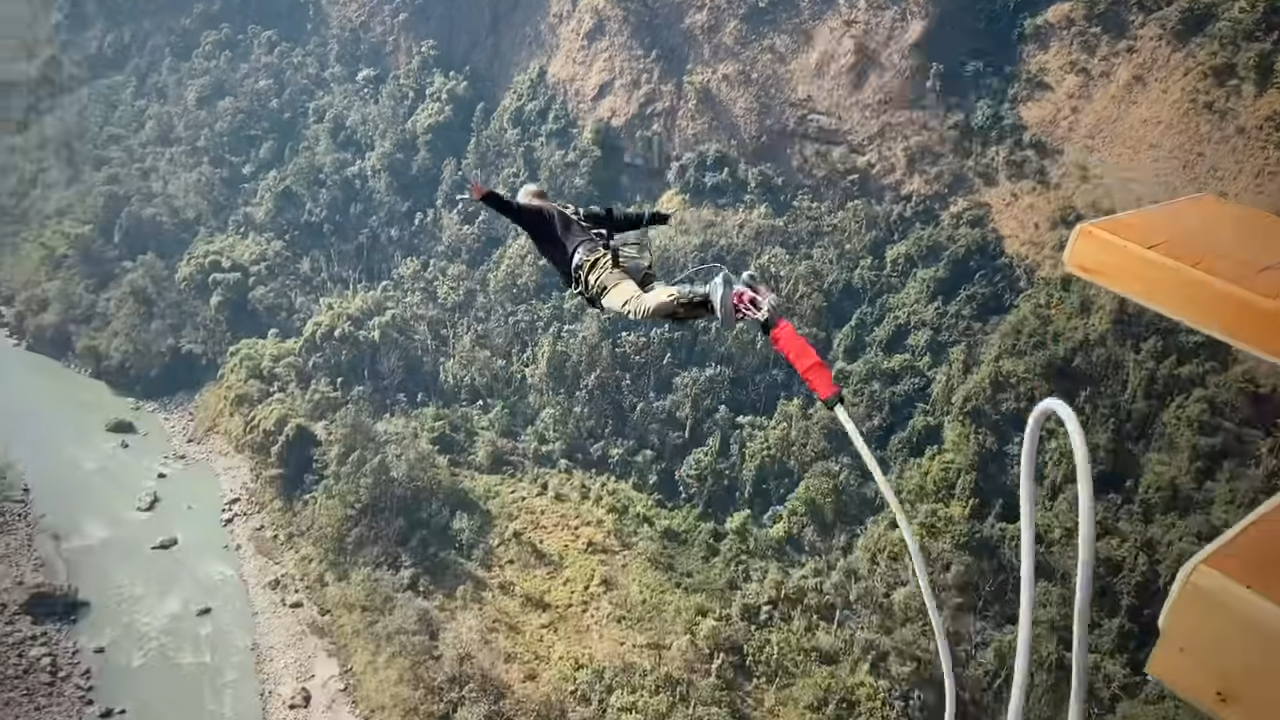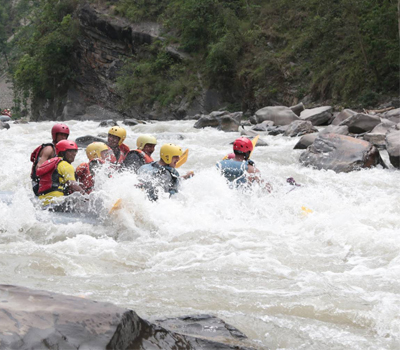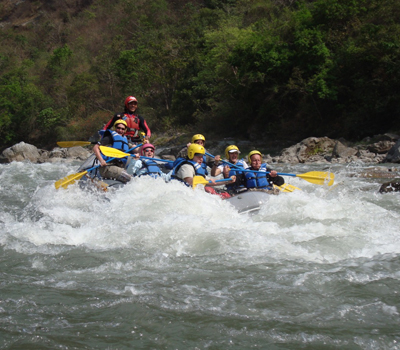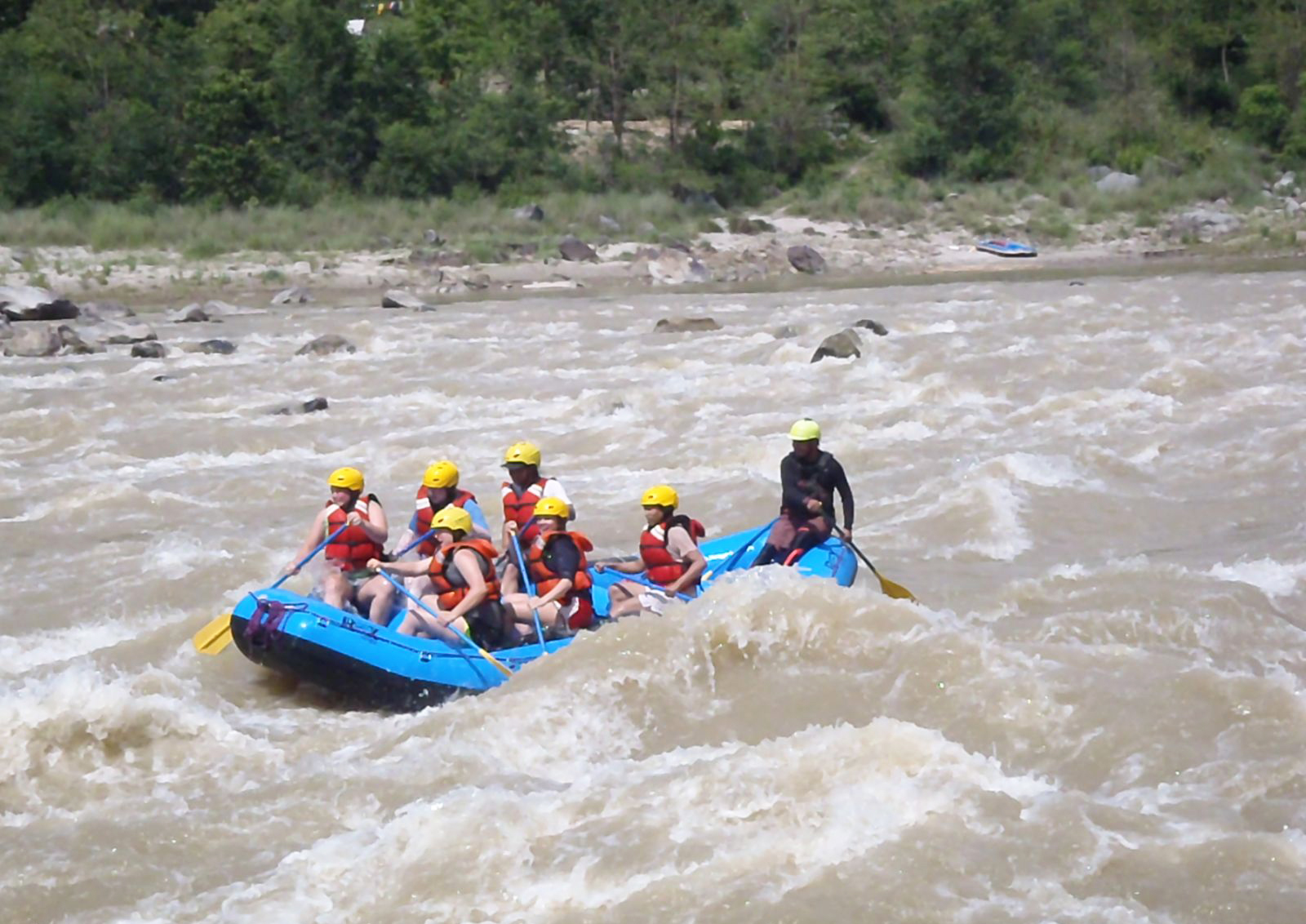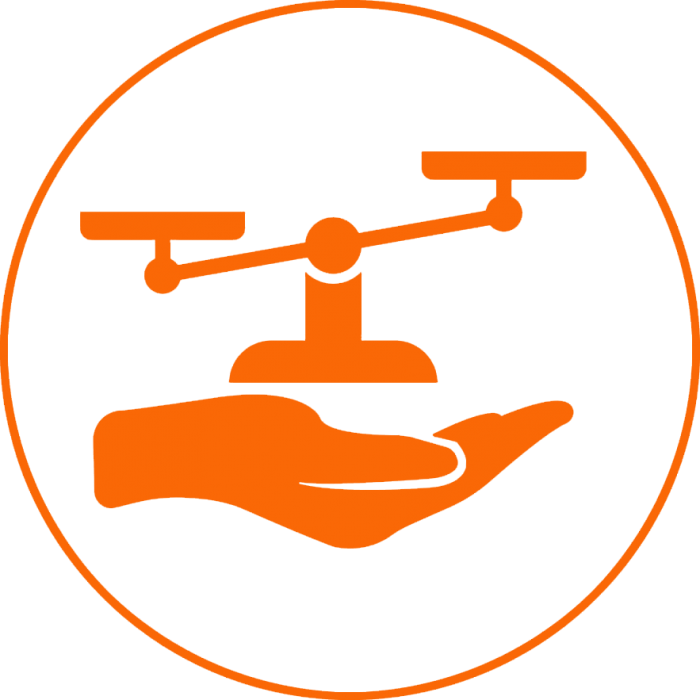Everest Base Camp Trek Package
Types of Everest Base Camp Trek Package and Costs
We have categorized the Everest base camp trek package based on the services provided to the trekkers. According to the package, the food and accommodation services vary, but the rest of the services remain the same. We offer three types of packages in which all expenses for trekking are included. Check out all 3 types of Everest Base Camp Trek packages.
1. Everest Base Camp Trek Budget Package:
This package offers a budget-friendly Everest Base Camp Trek Package. Under this trekking package, services are provided in guest houses in town and basic teahouses in the mountains. A teahouse is a type of small guesthouse run locally that provides basic accommodation and food to travelers.
Teahouses are usually basic and simple rooms with shared bathrooms and limited amenities. A cup of tea or coffee is included with each meal. Apart from that, other drinks are not included. This budget package service is available for only US$1050. Note: The package is available at this price only if there is a minimum group of two people.
2. Everest Base Camp Trek Standard Package:
You can choose the standard package option if you want better service than the budget-friendly package. The standard package offers food and accommodation at the best tea houses available in the hills. Meals are served on a full-open menu basis. Rooms with attached bathrooms are provided in good teahouses available along the trekking route. Unlimited tea, coffee for drinking, and hot water for bathing are included. This budget package service is available for US$1400. Note: The package is available at this price only if there is a minimum group of two people.
3. Everest Base Camp Trek Luxury Package
If you are thinking of a luxury trek, you can skip both of the above packages. Choose our Everest Base Camp Trek Luxury Package, which offers you complete luxury service at the top of the world. This package includes a luxury hotel (resort) in the hills. You can get the Everest Base Camp Trek Luxury Package for only US$2000. Note: The package is available at this price only if there is a minimum group of two people.
If you want to take any other type of package service, then let us know, and we will create an itinerary and package as per your needs.
Introduction of Everest Base Camp Trek Package
Most Famous Trekking in the World
If you are looking for an Everest Base Camp Trek Package, then you are at the right place. The Mount Everest Base Camp Trekking Package is designed for those who want to spend a day in the lap of the world’s highest mountain. This 12-day trek package allows you to see many stunning Himalayan peaks.
Nepal is a world-famous destination for trekking, and the Everest base camp trek package is the most famous trekking package in Nepal. The Everest Base Camp Trek is a world-class trek that leads to the lap of Mt. Everest. This adventure trip can provide complete satisfaction to the trekking lover.
Mount Everest (8,848 m), the top of the world, attracts trekkers from all over the world with its awe-inspiring attractions. It is one of the top three trekking destinations in the world, with magnificent Himalayan scenery. While trekking, you will get breathtaking views of the surrounding mountains, including some of the world’s highest and most iconic peaks. You can get magnificent views of four mountains above 8,000 meters: Mount Everest, Mount Lhotse, Mount Makalu, and Mount Cho Oyu.
The Everest Base Camp Trek is an exploration of the unique landscape of the Himalayan region, with majestic high mountains, impressive glaciers, Sherpa culture, flora, and fauna. Away from the busy lifestyle, convenience, and luxury, you will satisfy your soul with natural beauty.
You May Like: Most Popular Adventure Activities in Nepal, Affordable Price, Best Outdoor
Visit Monasteries in the Everest Region
Visit monasteries along the way to connect with your spirituality and find inner peace. Visiting a monastery can be a great option if you are looking for a sense of inner peace. Most of the monasteries are located in stunning locations with breathtaking views. These monasteries also add to the natural beauty of the region. Tengboche Monastery, Pangboche Monastery, and Thame Monastery are popular monasteries in this area.
The trekking trail takes you through ethnic Sherpa villages to the base camp. Interacting with locals gives insight into their culture, traditions, and lifestyle. The simple lifestyle of the Himalayan people is fascinating, and their warm hospitality will make you feel at home. The people of the Everest region have a distinct culture and lifestyle that Tibetan Buddhism influences.
Overall, the Everest base camp trek is an unforgettable blend of natural beauty and cultural immersion. This is a unique experience in the Himalayan region of Nepal that is sure to stay with you for a lifetime.
Start Trip
The journey to Everest Base Camp will begin with a short adventure flight to Lukla. An exciting and scenic 45-minute flight from Kathmandu takes you to Lukla’s Tenzing Hillary Airport at an altitude of 2,846 meters. It is a small airport that is the primary gateway for trekkers and climbers to the Everest region.
The flight is short but scenic, offering panoramic views of the Himalayan mountain range, deep valleys, lush forests, and the surrounding landscape. It is also a great opportunity to see Nepali traditional villages and monasteries, as well as the natural beauty of Nepal. A flight to Lukla is an adventurous experience, especially for those who love breathtaking scenery and unique travel experiences.
After landing at Lukla Airport, your trekking will begin. This first day’s hike will take you to Phakding Village (2,610m). Phakding is a small Sherpa village surrounded by beautiful forests. Passing through various traditional Sherpa villages, beautiful scenic landscapes, green forests, and many suspension bridges, you will reach Phakding Village in about 4 to 5 hours.
Visit Namche Bazar (the Main Trading Market of the Khumbu Region)
The next day, you will start walking from Phakding to Namche Bazaar after breakfast. Located at an altitude of 3,440 meters, Namche Market is the main commercial market of the Khumbu region. The trek continues along the northern banks of the Dudhkoshi River, enjoying scenic views.
Visit Also: Everest Three Pass Trek 18 days, Itinerary, Cost, Package
You will cross several suspension bridges, including the famous and beautiful Hillary Suspension Bridge. The Hillary Suspension Bridge spans the Dudh Koshi River, which is named after Sir Edmund Hillary, the first person to summit Mount Everest. There is an Everest National Park checkpoint on the way where you have to register the permits.
After 6 to 7 hours of walking, you will reach the beautiful small town of Namche Bazar. The place is known for its stunning views of the Himalayas and its colorful, traditional Sherpa culture. It is also a popular stop for trekkers and mountaineers en route to Mount Everest and other nearby peaks.
The third day of the trip is an acclimatization day in Namche. There are many ways to spend time at Namche Market. Some of the best options are as follows:
Things to do in Namche Bazaar
Explore the market: Namche Market is a charming and colorful tourist town. You can explore many interesting shops and markets.
Visit the Sherpa Museum: In this museum, you can see art galleries and a glimpse of Sherpa’s history, culture, and lifestyle.
Enjoy the beautiful scenery: The Namche Bazaar is surrounded by many stunning mountain peaks. You can enjoy the beautiful scenery by getting close to those mountains.
Relax at a local tea house: Namche Market has many coffee shops, hotels, and restaurants where you can relax and enjoy a hot cup of tea or coffee.
Day Trip: There are some interesting destinations within a short distance of Namche Bazaar where you can take a day trip. Thame Valley and Khumjung Valley are good destinations for a day trip.
Syangboche Airport Visit: Syangboche Airport is located about 5 km northwest of Namche Bazaar. The airport is located at an altitude of 3,762 meters above sea level. The airport is also a popular destination for hikers and tourists visiting the area.
Visit Hillary School: Hillary School is a school founded in honor of Sir Edmund Hillary, the first person to summit Mount Everest. The school is a non-profit organization supported by donations from individuals, organizations, and governments around the world.
Visit a yak farm: There is a yak farm near Namche Market. Yaks are important to the local economy and culture of the region. They are used for transportation, milk production, and meat purposes. You can visit this place to get information about the farms.
Visit Beaufitul Tengboche Monastery
The next day, after breakfast, you will start your journey to Tengboche. Passing small villages, forests, and high-altitude grasslands, you will reach Tengboche village after a 5- to 6-hour hike. Situated at an altitude of 3,867 meters, the village is known for its attractive Buddhist monastery.
Tengboche Monastery is the largest and most famous monastery in the region, making it a major attraction for trekkers and visitors. Surrounded by beautiful forests, this place offers stunning views of Mount Everest, Ama Dablam, and other mountains. Situated in a beautiful and peaceful environment, a monastery is an ideal place for meditation and prayer.
The fifth day of the journey will take you to Dingboche. The entire mountain range of the Khumbu region can be seen from this place at an altitude of 4,410 meters. This place offers a beautiful view of Everest (8,848 n), Lhotse (8,516 m), Nuptse (7,861 m), Makalu (8,485 m), Cho Oyu (8,189 m), Ama Dablam (6,812 m), Island Peak (6,189 m), Mera Peak (6,476 m), and Lobuche (6,119 m)
Acclimatization Day at Dingboche
The next day will be your acclimatization day at Dingboche, as you will have reached an altitude of around 4,500m. Admire the views of the beautiful Ama Dablam (6,812 m) while having breakfast. You can spend your day on a short walk to Nangkartshang Gompa. This Buddhist monastery is a short distance from Dingboche. From this vantage point, you can see the magnificent mountains, the Imja valley, as well as the beautiful fields and pastures.
On the seventh day of the trip, you will walk from Dingboche to Lobuche. At an altitude of 4910 meters, this village is a popular stop for trekkers on the Everest Base Camp trek. You will walk along the Khumbu Glacier. The trail also leads to Thukla Hills, where you will see memorial statues of climbers who died in the area. From here, you can enjoy a panoramic view of majestic mountains like Pumori (7145 m), Lingtran (6697 m), Khumbutse (6623 m), Changtse (7550 m), Nuptse (7,861 m), and Lhotse (8,516).
Reach Everest Base Camp
The next day’s trek takes you to Everest base camp (5,364 m), so this day will be a special day for you. From Lobuche, you will reach the beautiful Gork Shep village (5,140m), surrounded by mountain scenery, including the peaks of Pumori, Lingtrain, and Khumbutse.
This is the last stop for an overnight stay, so you will leave your luggage at Gorak Shep and walk to the base camp. The trail to the base camp involves a steep ascent through rocky terrain, but it is quite exciting. You will pass through the famous Khumbu Icefall, which is a major attraction of the base camp trek.
After reaching the base camp, you will have a dream come true: seeing the highest mountain in the world up close. From the base camp, you can see the view of the south face of Everest. The base camp also offers views of the surrounding beautiful peaks of Lhotse, Nuptse, and Pumori.
Spend some time enjoying the incredible views of the surroundings in the lap of the world’s highest peak. Capture some photos and videos for lifetime memories. Celebrate your success and return to Gorak Shep by the same route.
You may Like: Everest Pikey Peak Trek in just 8 days, Itinerary, Cost, Difficulty, Package.
Kala Patthar (a famous viewpoint)
The next morning, you will start the hike to Kala Patthar. Kalapathar, at a height of 5,545 meters, is a famous viewpoint from which you can witness the amazing view of the sunrise over Mount Everest and other peaks. Along with the sunrise, you can also enjoy stunning panoramic views of the Himalayas, including Everest, Lhotse, Nuptse, and other peaks.
Kala Patthar is higher than Everest Base Camp, and as a result, Kala Patthar offers a better view of the surrounding mountains than Everest Base Camp. It takes about 3–4 hours to walk to Kala Patthar, which is about 5 km from Gorak Shep. After spending some time at Kalapatthar, you will return to Gorak Shep, and from there, you will trek to Pheriche again.
The next day, you will reach Namche from Pheriche. Beautiful prayer flags, monasteries, suspension bridges, and shortens along the way will make the journey enjoyable. The last day of trekking takes you from Namche to Lukla. After 8 to 9 hours of walking from Namche, you will reach Lukla and spend the night at the hotel. Next morning, you will fly from Lukla to Kathmandu, and your Everest base camp trek package will be complete.
Everest Base Camp Trek Package for All
This Everest Base Camp Trek Package is designed for those trekkers who are in good health, have trekking experience, and can walk for 6-7 hours per day at high altitudes without any difficulty. Good technical skills are not required, but past trekking experience or regular walking habits will make the trip easier. The Everest base camp trek is not just a journey but one of the best mountain treks to do in a lifetime.
We arrange the Everest Base Camp Trek Package as per your wishes and holiday schedule. Check out our itineraries that are tailored to suit trekkers. If you have different plans or interests, let us know, and we will customize the itinerary according to your needs. Join Odyssey Treks Company and make the most unforgettable Himalayan trip of your life.
You may like: 15 Best places to Visit in Nepal, Itinerary, Package, Transportation, and Cost.
The Attractions of Everest Base Camp Trek
A close-up view of Mount Everest: This trek takes you to Mount Everest’s base camp. From the base camp of the world’s highest mountain, you can get stunning views of Mount Everest and its surrounding peaks.
An exciting flight: Enjoy the exciting flight from Kathmandu to Lukla. A 45-minute flight takes you to Tenzing Hillary Airport at an altitude of 2,846 meters. The flight is short but scenic and offers panoramic views of the Himalayan range, deep valleys, and lush forests.
Trek to the highest mountain: Trek to the base camp of Mount Everest, the world’s highest mountain.
Magnificent view of Khumbu Glacier: Khumbu Glacier is a large glacier located near Mount Everest. It is one of the most famous glaciers in the world, located at an altitude of about 4,572 meters.
Magnificent view of Khumbu Icefall: The Khumbu Icefall is a large and dangerous area of sliding ice blocks and holes located on the Khumbu Glacier near Mount Everest. Located at an altitude of about 5,486 meters, it is one of the most treacherous sections of the route to the summit of Mount Everest.
Namche Bazaar: Namche Bazaar is the main trading market in the Khumbu region. It is a small town with many nice hotels, restaurants, and shops. It is a popular stop for trekkers and mountaineers on their way to Mount Everest and other nearby peaks. Namche is known for its stunning views of the Himalayas and its colorful, traditional Sherpa culture.
Cultural experiences: The Khumbu region is inhabited by Sherpas, and their culture and traditions are unique. This trek creates an opportunity to get close to the Himalayan people and experience their daily lifestyle.
Sunrise view from Kala Patthar: Kala Patthar, at a height of 5,545 meters, is a famous viewpoint. This place is famous for its amazing view of the sunrise over Mount Everest and other peaks. From here, you can also enjoy stunning panoramic views of the Himalayas, including Everest, Lhotse, Nuptse, and other peaks.
#Tengboche Monastery: Tengboche Monastery is located in Tengboche village. This monastery is the largest and most famous Buddhist monastery in the Everest region. At an altitude of 3,867 meters, the monastery is a major attraction for trekkers and visitors. Situated in a beautiful and peaceful environment, this beautiful monastery is an ideal place for meditation and prayer.
Sagarmatha National Park: Sagarmatha National Park is home to the world’s highest peak, Mount Everest. It is also the highest national park in the world. The park covers an area of approximately 1,148 square kilometers. The park was listed as a UNESCO World Heritage Site in 1979.
Food and accommodation during the Trek
Most of the trekkers choose teahouses on the way for accommodation and food. There are many teahouses and hotels run by locals along the Everest Base Camp trekking trail. Teahouses are a type of small lodge that provides food and accommodation for trekkers.
These teahouses are simple yet comfortable and budget-friendly. These rooms are simple, with two single beds, pillows, mattresses, and blankets. There are usually shared bathrooms. You will get extra blankets if it is cold. You can use your sleeping bag if you feel too cold.
If you don’t have it with you, you can also rent it. Depending on the location, some have rooms with attached bathrooms, while others are on a shared basis. Hot water for bathing is available in almost all teahouses, but if not, it is available at your request.
At the teahouses, you get a wide variety of food options, including local Nepali dishes such as Dal Bhat (rice, lentils, and vegetables) and Momos (Nepali dumplings). Along with Nepalese food, continental food is also available. More familiar international dishes, such as pasta, pizza, and sandwiches, are also usually available.
You can also find soup, porridge, eggs, and other simple breakfast items. There are local shops where you can also buy snacks and drinks like chocolates, nuts, and sodas. If your budget is high and you want to do a luxurious trek, you can find luxurious hotels and lodges in many places.
Everest Base Camp Trek Package Cost
Everest base camp trekking package cost depends on your trekking agency, the service you take, and group size. This cost is expensive if you are a solo trekker but less if you are in a group. Similarly, if you do a budget trek, the cost will be less, but if you do a luxury trek, the cost will be expensive.
It also depends on the trekking company; some companies conduct trekking at a high cost, and some at a low cost. Odyssey Treks offers a budget-friendly package at USD$1050, a standard package at USD$1400, and a luxury package at USD$2000. Note: The package is available at this price only if there is a minimum group of 2 people.
Everest Base Camp Trek Difficulty
It is important to know how difficult or easy the trek is before starting it. Many aspects can make the trek difficult, so you should know about those aspects as well. The trek can be difficult due to the weather and high altitude. So, it is necessary to choose the right time and prepare yourself for high altitude. Trekking at high altitudes can cause altitude sickness, so it is important to acclimatize your body while trekking.
The trek is easy at lower altitudes and somewhat challenging at higher altitudes. This trek is for everyone, so you can complete it with good preparation and a bit of self-determination. No hard-core technical skills or training are required to complete the trip. Although no hard-core technical skills are required, you should be able to walk for long periods of time, as this hike involves a lot of uphill and downhill walking. The trek is of a moderate to strenuous level, so good physical fitness is required to complete it.
Best Season for Trekking to Everest Base Camp
The weather in the Everest region can be quite unpredictable, and conditions can change rapidly. So, before trekking to the Everest base camp, it is important to know which season is suitable for trekking. It is always a good idea to be prepared for rapidly changing weather conditions and be flexible with the itinerary if needed.
The best seasons for trekking to Everest base camp are usually autumn (September, October, and November) and spring (March, April, and May). During autumn and spring, there is less rainfall and less cold, which makes the trek easier to complete. The climate is also perfect during these seasons. A clear view of the majestic Himalayas and their surroundings can be seen. With the proper planning, you can trek at any time, although it is a good idea to do it in the best seasons.
Risk and Security During the Trek
Every year, about 3,0000 tourists come to trek to the Everest region. In general, the Everest Base Camp trek is safe and enjoyable. However, some necessary precautions must be taken to make the journey safer. Trekking at high altitudes in the Himalayas has some potential risks and challenges, but these can be minimized with proper pre-planning and preparation.
One of the main risks is altitude sickness, which can occur during quick ascents to high altitudes. The best way to avoid altitude sickness is to spend a few days at a low altitude before climbing to a high altitude. Drink plenty of fluids and eat a high-carbohydrate diet. Another possible risk is exposure to extremely cold temperatures. It is important to wear appropriate clothing to avoid the cold.
Another potential risk is dehydration, which can be caused by dry air and high levels of physical activity. To avoid this risk, stay well hydrated and take regular breaks to rest. You can trek without a guide, porter, or agency, but it is safer to trek through a trekking company. An experienced guide or trekking company can provide information about local conditions. The guides selected by the trekking company are licensed, and the porters are well-trained. Guides and porters will protect you and your luggage throughout the trek.
Altitude Sickness and Acclimatization
Altitude sickness is also known as acute mountain sickness (AMS). It can occur during rapid ascents to high altitudes. Altitude sickness is most common at altitudes above 2,400 meters, but it can occur in some people at lower altitudes. At higher altitudes, there is less oxygen, which can cause various symptoms such as headaches, nausea, shortness of breath, and fatigue. If you ignore these symptoms, it can lead to serious problems.
You can avoid this problem by taking some precautions. It is essential to include acclimatization days in the trekking itinerary to avoid altitude sickness. If you are well-acclimated to lower altitudes, you will find it easier at higher altitudes. Acclimatization days at Namche and Dingboche are required on the trek to base camp. Another effective way to avoid altitude sickness is to ascend slowly. Drink plenty of fluids, especially water. If serious problems occur, it is best to take medication and descend to a lower altitude as soon as possible.
Purified water, Shower, Toilet, and Mobile Charging
Boiled pure drinking water and mineral bottled water are available at almost every tea house and lodge during the trek. A hot shower is possible with a gas geyser or hot bucket, but you have to pay extra money for it. It is a good idea to carry some extra batteries for the camera and mobile. If not, you can charge the battery at almost every teahouse where you stay overnight, but you have to pay per battery for charging.
Toilets are available everywhere, but they are mostly squat toilets, and these are usually outside the room. Some good hotels and lodges have western-commode toilets attached to the rooms. You can find western commodes in lower altitudes, but most high-altitude guesthouses have squat toilets. It is better to carry things like toilet paper, hand washing liquid, sanitizer, soap, and towels with you, as these are not available everywhere.
Everest Base Camp Trek Permits
Trekking in the Himalayan region and national parks requires a permit. Everest Base Camp is not a restricted area, so it does not require special permits, but other permits are required. The Khumbu Pasang Lhamu Village Entry Permit and the Everest National Park Entry Permit are required.
Since the Khumbu Pasang Lhamu rural municipality entry permit is not available in Kathmandu, it must be obtained in Lukla. An Everest National Park entry permit can be obtained from the Nepal Tourism Board office in Kathmandu or at the entrance of Everest National Park.
Guide and Porter
Hiring a guide for the trek is recommended, especially if you are not familiar with the area. Guides provide information about local places, culture, and history. They also help you arrange transport, accommodation, and food. Guides also protect you and your belongings during trekking.
If your luggage is small and light, then you can carry it yourself, but if the luggage is heavy, then a porter is required. By hiring a porter, you don’t have to worry about carrying heavy luggage. The maximum weight carried by a porter is 20 kg. Usually, two people’s luggage is carried by one porter, and you can share one porter with two people. If you have more luggage than this, you can hire more porters.
Email us at info@odysseytreksnepal.com if you want to take any package plan service at Everest base camp. If you want a different type of service, let us know, and we will help you create a package according to your needs.
Visit Also: Top 10 treks in Nepal, Itineary, Full package, Cost, Difficulty, Weather, Transportation

